Treat yourself to this moist and bouncy Japanese sponge cake called Castella. Prized for its delicate crumb and sweet honey flavor, it’s a beloved tea snack and a great hostess gift, too. Bake a perfect Castella Cake at home with my techniques and tips!
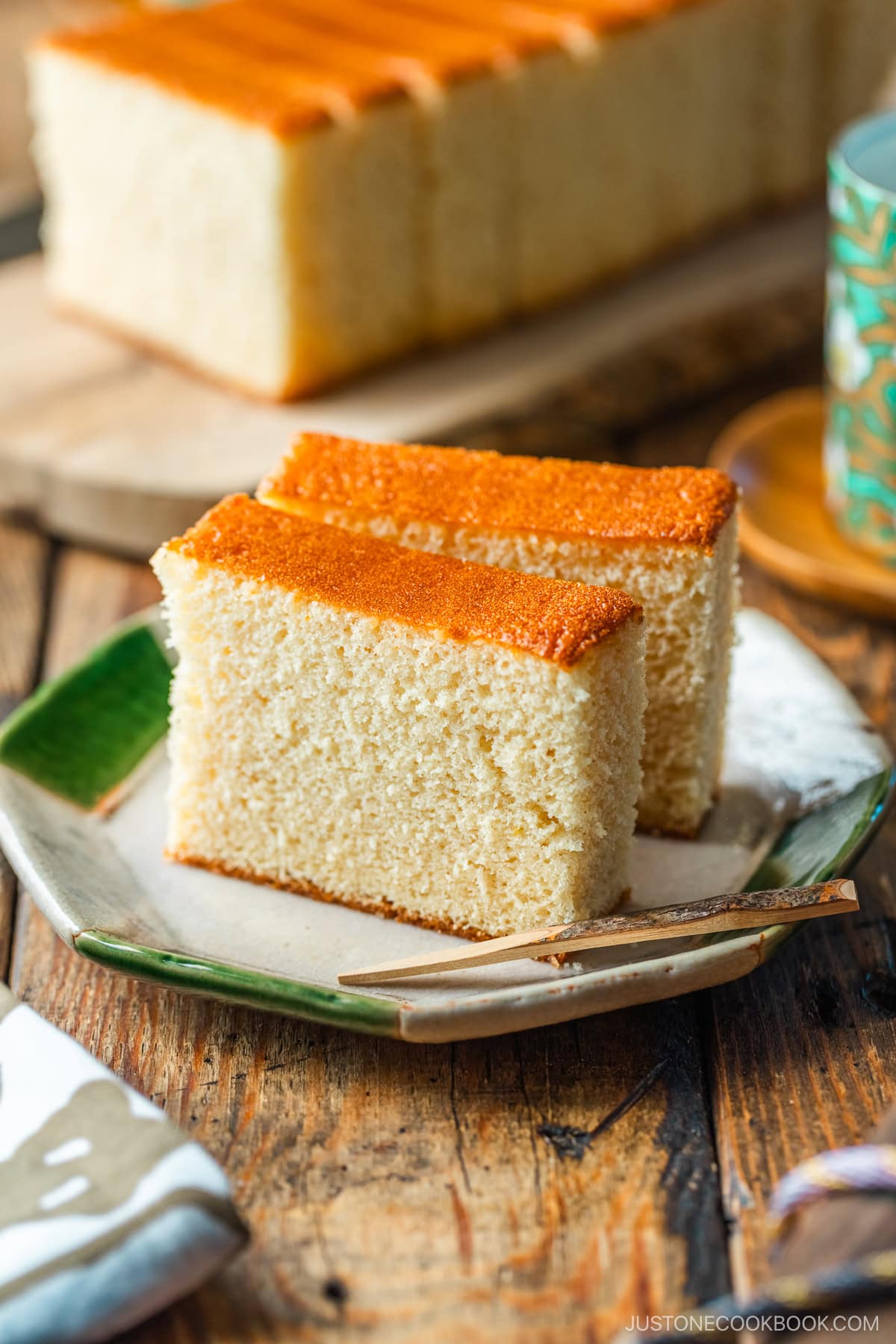
One of my favorite sweets of all time is Japanese Castella Cake (カステラ). It’s a moist and bouncy sponge cake with a sweet honey flavor. My family enjoys this refined confectionery with green tea or a cup of coffee for our three o’clock oyatsu (snack) time.
It’s one of the most popular cakes in Japan, too. You‘ll find it sold just about anywhere—at department stores, specialty sweet shops, kissaten (coffee shops), and even convenience stores. Don’t worry if you’re not in Japan to buy this delicious treat, though. Today, I’ll share my recipe with special tips and techniques so you can make this exquisite Castella Cake at home!
Table of Contents
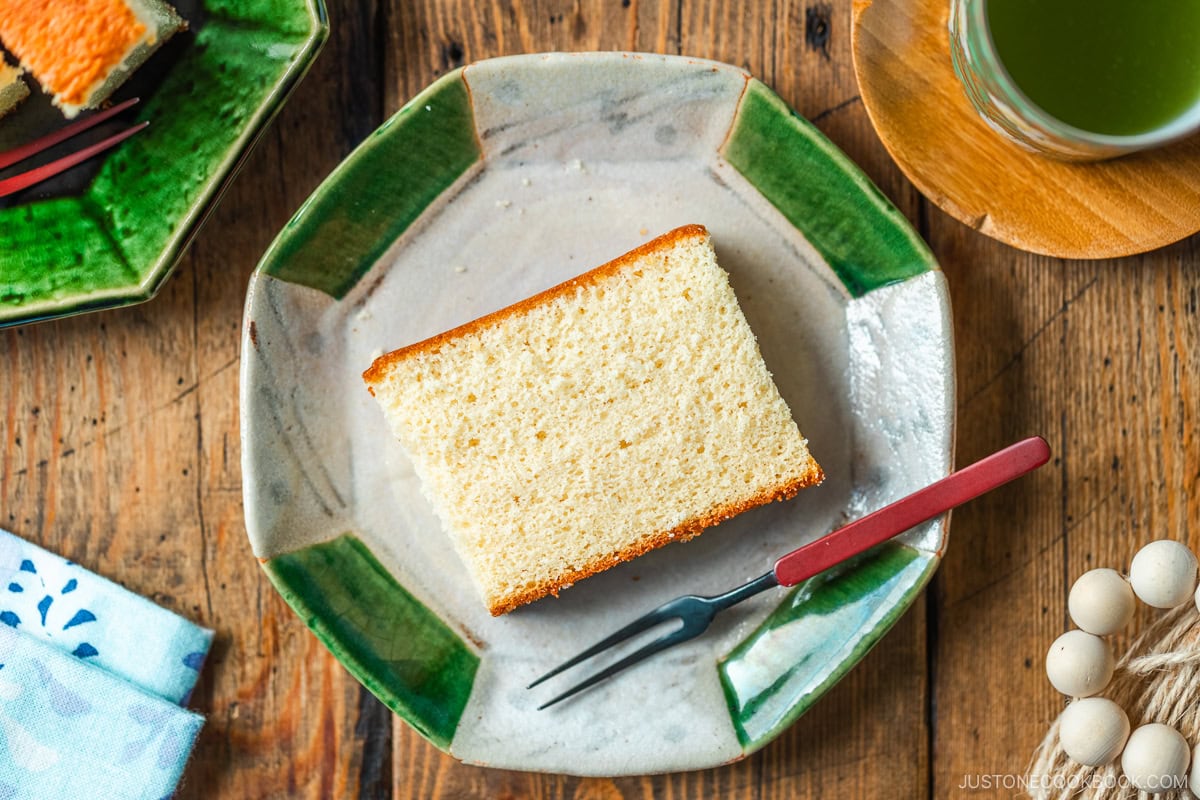
What is Castella?
Castella, or Kasutera (カステラ), is a beloved Japanese honey sponge cake known for its sweet taste and airy texture. More delicate and bouncy than a regular sponge cake, castella is famous for its fine and moist crumb. It’s cherished nationwide as a tea snack, souvenir, and gift, making it one of Japan’s most popular confections.
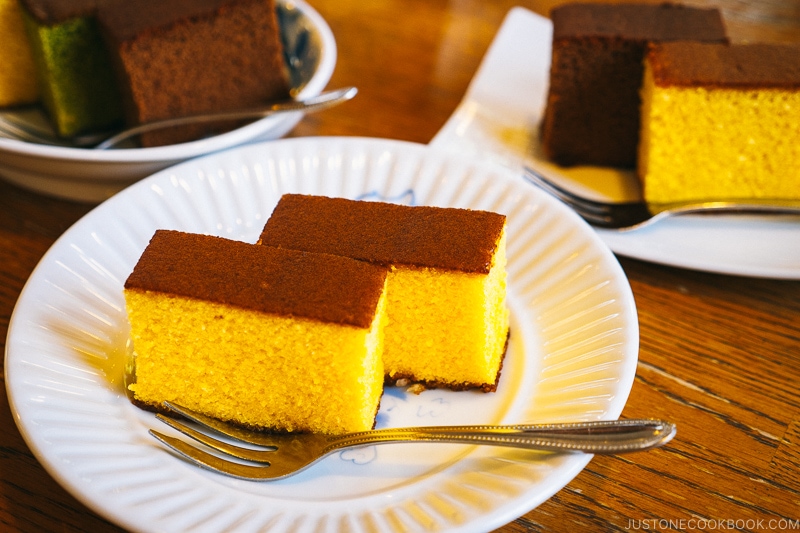
This famous cake originated in 1543 in the port town of Nagasaki on the southern Japanese island of Kyushu. That’s when Portuguese merchants and missionaries arrived with a firm and simple bread called pão de Castela (“bread of Castile” referring to Spain’s Kingdom of Castile).
Since the 16th century, Japanese artisan bakers have transformed the recipe into a sweet cake thanks to Nagasaki’s abundance of imported sugar. They have also incorporated eggs, honey, and sugar to give it a more delicate and sponge-like texture. It’s a Western-style confectionery that is uniquely Japanese!
Why You’ll Love This Recipe
You’ll be amazed that you can make this Nagasaki specialty in your own kitchen!
- Uses a standard loaf pan – Castella is traditionally baked over low heat in a wooden frame because metal pans transfer heat faster and can result in a dry cake. However, you can use a regular 1 lb. loaf pan with excellent results if you apply the techniques that I share here.
- Makes a very moist cake – I use a very thick Japanese sweetener that helps yield a perfectly moist texture.
- Takes just 1 hour of active baking and prep time – Prep and bake this castella in just an hour. Relax while it chills overnight. The wait is worth it!
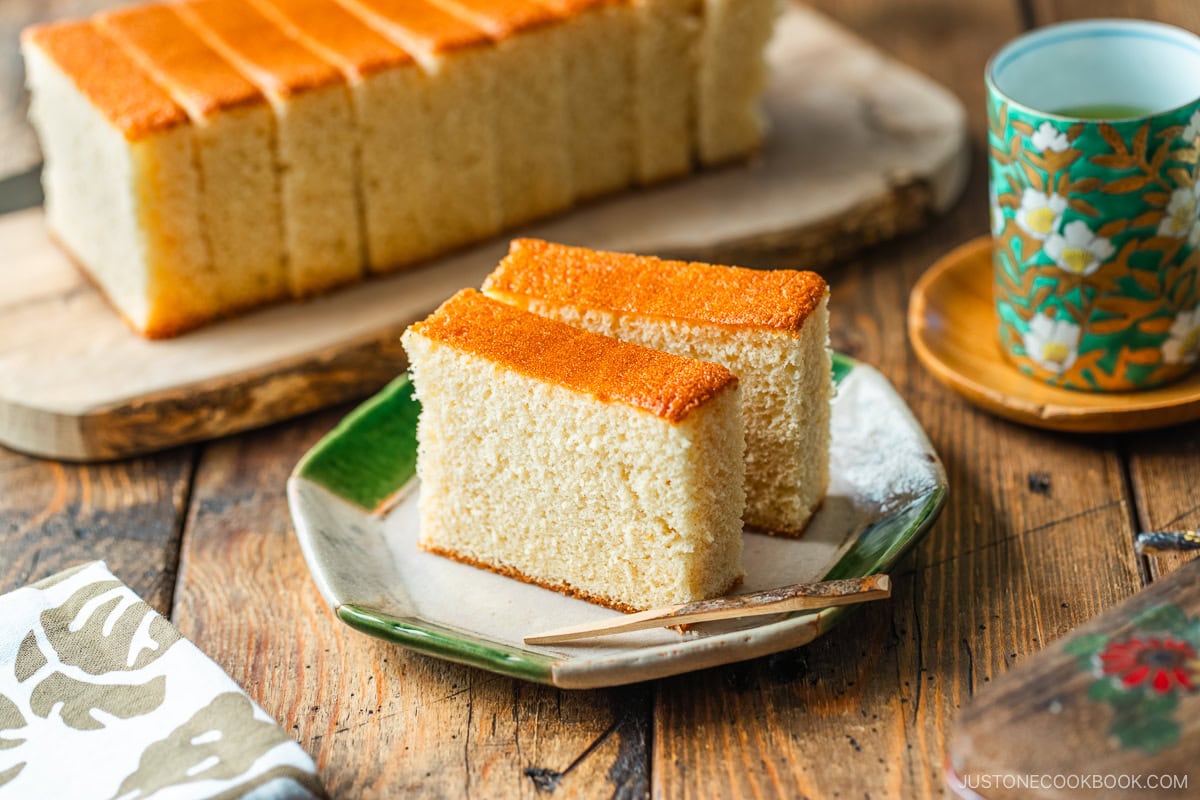
Ingredients for Castella Cake
Here’s what you’ll need to make Japanese castella:
- Bread flour – Adds an elastic, bouncy texture
- Large eggs – Use at room temperature so your ingredients blend more evenly and cohesively
- Water
- Sugar – Binds with the water to keep the crumb soft and tender
- Honey – Provides castella’s signature flavor; adds moisture and a rich color
- Mizuame (水飴, glutinous starch syrup) – Keeps the cake more moist (see below)
- White sparkling sugar (or zarame ザラメ, Japanese coarse sugar) – Adds a golden brown crunch to the bottom crust
Substitution Tips and Variations
- While my recipe calls for white sparkling sugar, authentic Japanese castella commonly uses zarame (ざらめ, ザラメ), a coarse sugar. Since it’s not easy to find outside of Japan, I decided to use sparkling sugar that you can find on Amazon. You can also use demerara sugar.
- Mizuame (literally “water candy;” also called millet jelly) is a traditional Japanese sweetener made of starch. It‘s a super sticky and clear syrup that’s extremely thick (see the image below). Be sure to use the thick type sold in a jar. It’s about the consistency of molten candy that’s almost cool enough to pull into hard candy. It’s hard to find outside of Japan, but some Japanese markets (like Nijiya Market in my area) may carry it. If you can’t find it, leave it out entirely. Do not use the thin type of mizuame sold in pouches. It’s runny and fluid like honey, and it contains too much moisture for this recipe.
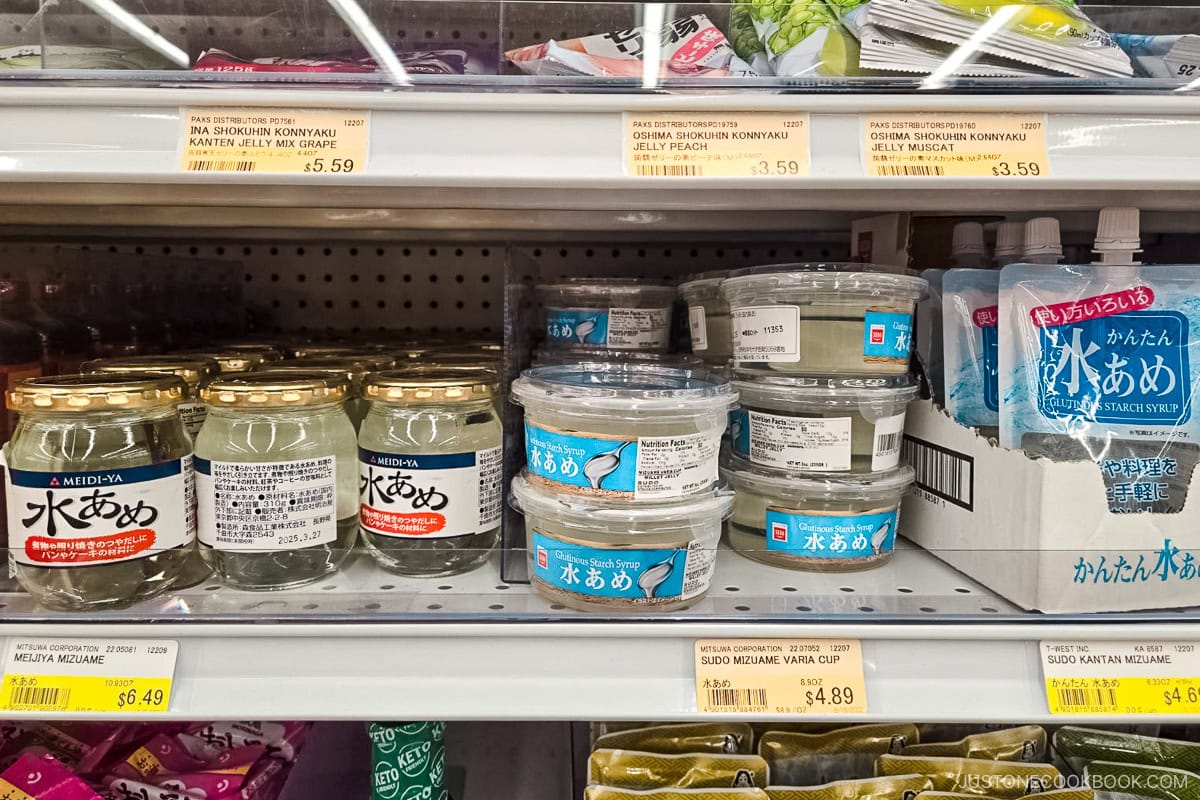
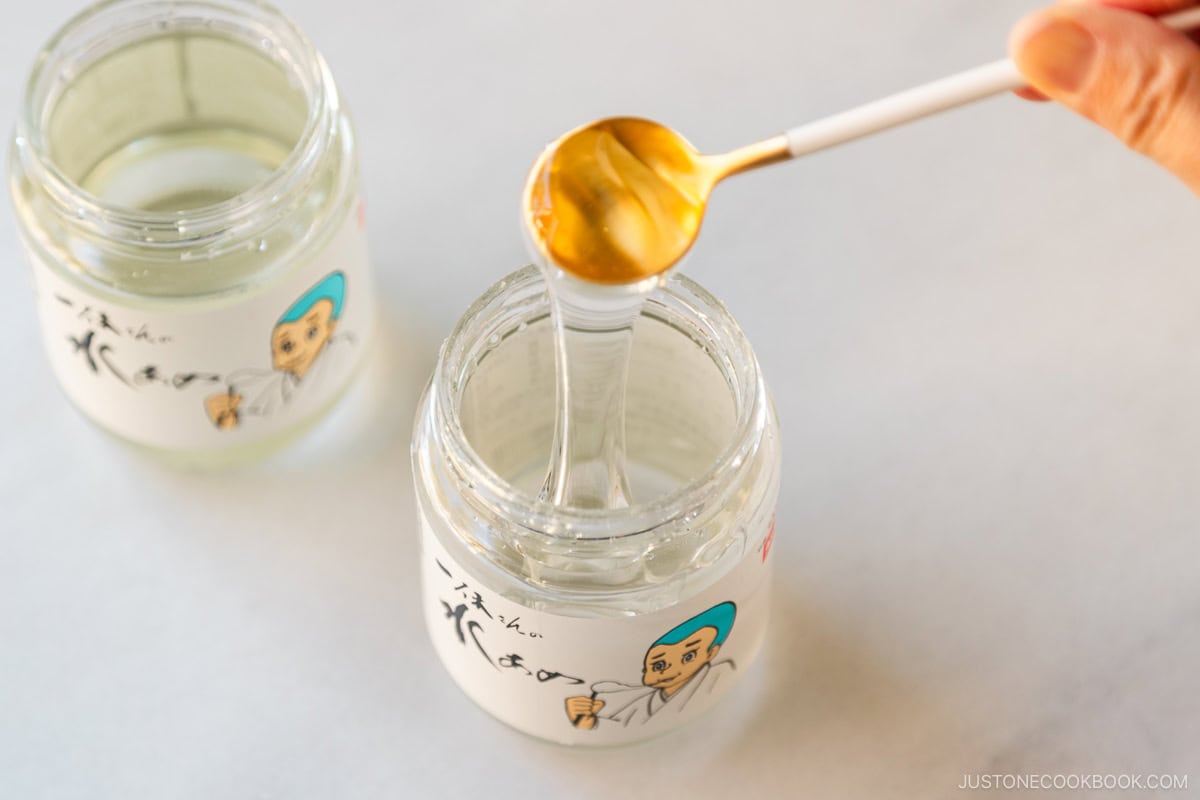
Left image: Mitsuwa sells 3 mizuame brands: The ones on the left and middle have good consistency (super thick). Do not buy the one on the right in the pouch (too watery).
Right image: Nijiya sells this brand (Ikkyu san no mizuame) and I use it.
How to Make the Best Castella
Follow my precise instructions and techniques, and you’ll be rewarded with the most delicious homemade castella cake!
- Line the baking pan with parchment paper.
- Make the batter. First, beat the sugar and eggs together in a mixer on high speed. Next, fold in the honey and mizuame, and finally add the flour.
- Pour the batter into the pan; remove the air bubbles.
- Place in a preheated 340°F (170°C) oven.
- Mix the batter 4 times during the first 12 minutes of baking. Then, bake for another 28–30 minutes. It’s done baking if it bounces back when you touch it with your finger. No need to test it with a toothpick.
- Invert the cake onto a nonstick mat and let it cool.
- Wrap in plastic and chill overnight.
- Trim the side crusts with a sharp bread knife. Slice and serve!
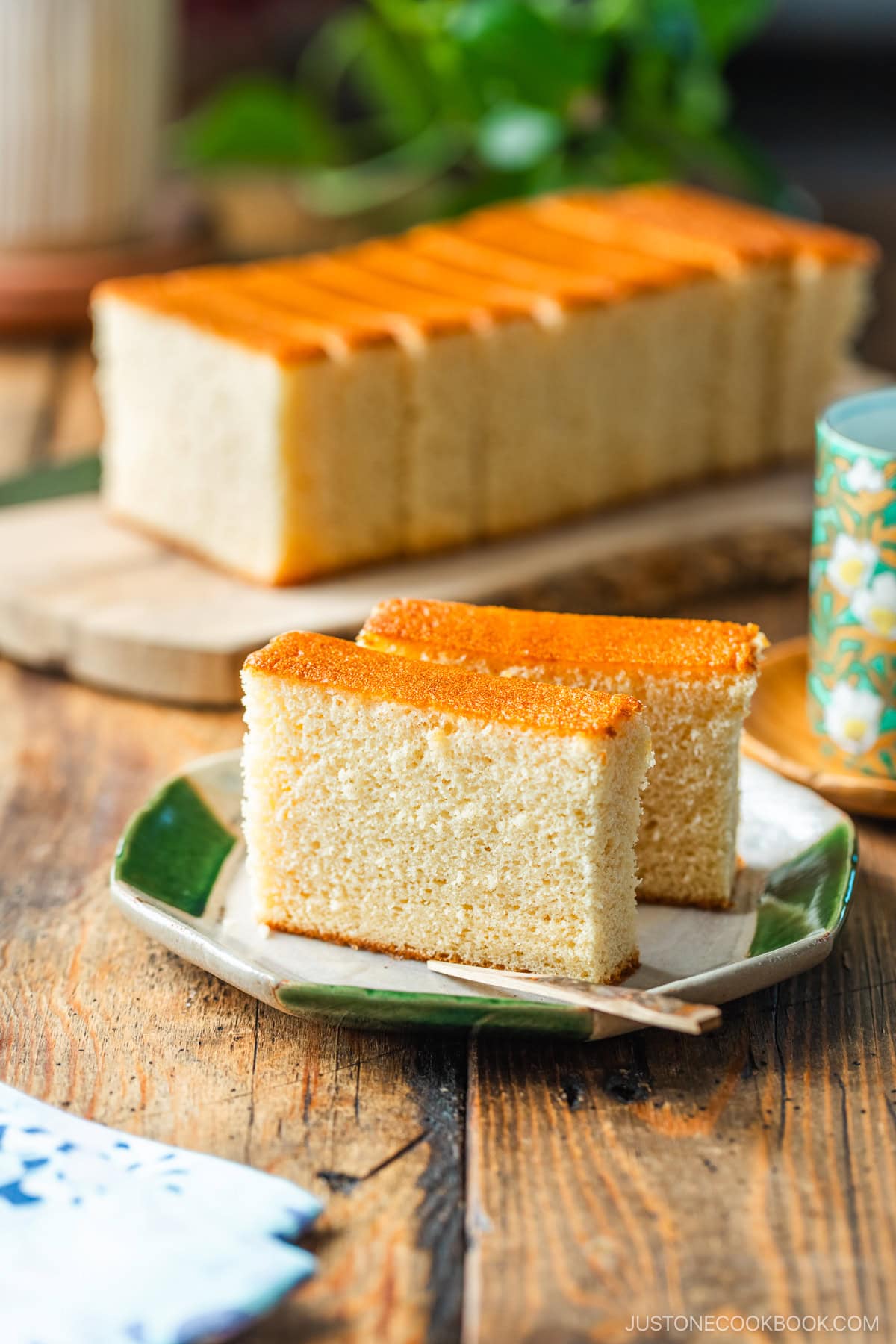
Recipe Tips and Techniques
- Bring the eggs to room temperature. This is very important. I leave them on the counter for several hours. You can also fill a bowl with very warm (but not hot) tap water and submerge the cold eggs until they reach room temperature, for about 10 minutes.
- Weigh your ingredients. Precision is important in baking, and weighing your ingredients with a digital kitchen scale is the most accurate way to measure. I highly encourage you to weigh your flour and sugar instead of using measuring cups, as you may scoop more than you need.
- Use a light-colored pan. I recommend a light-colored loaf pan for this recipe. A dark-colored pan may have hot spots, overbake on the sides and bottom, and bake the cake too fast.
- Use stainless steel clips to hold the parchment paper. I’ve tried different ways to attach the paper to the cake pan, but nothing worked until I used the clips.
- Don’t microwave the honey mixture. I know it’s tempting to heat the mixture to facilitate dissolving, but we don’t want to increase the batter temperature with a warm honey mixture. Press down and mash the thick mizuame with the mini spatula to facilitate dissolving.
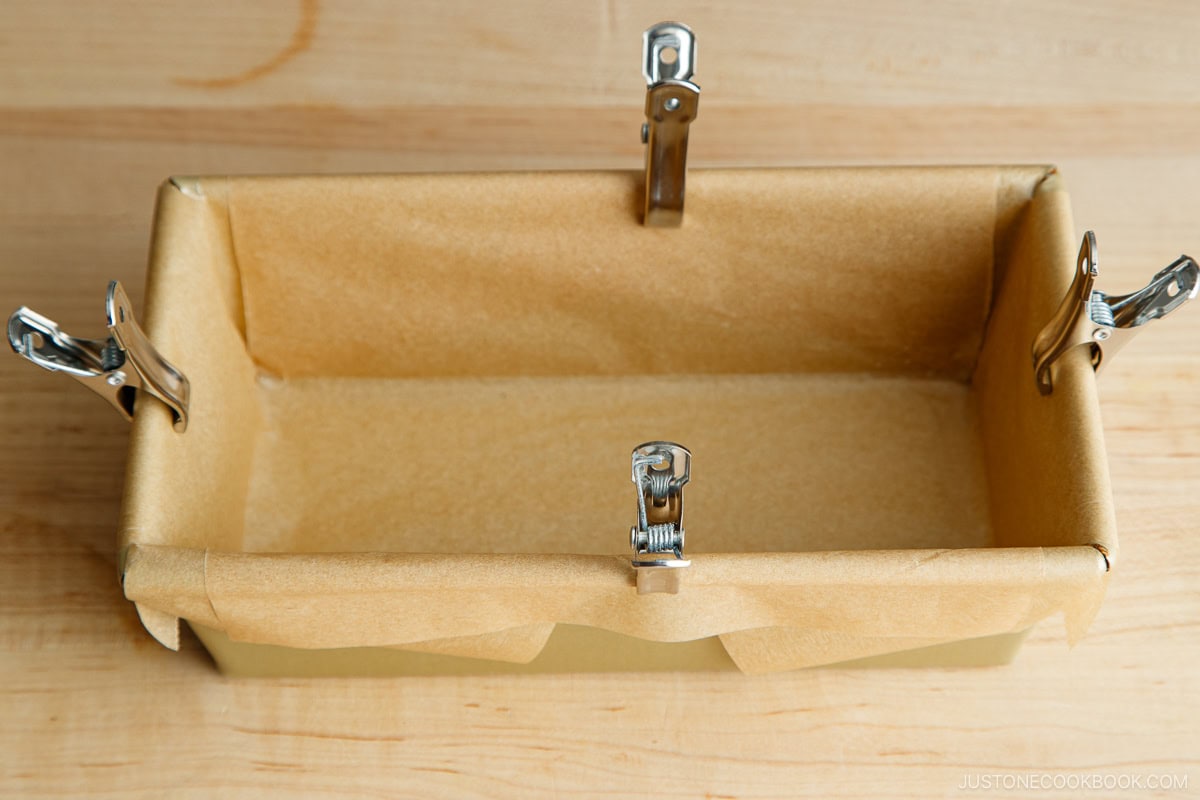
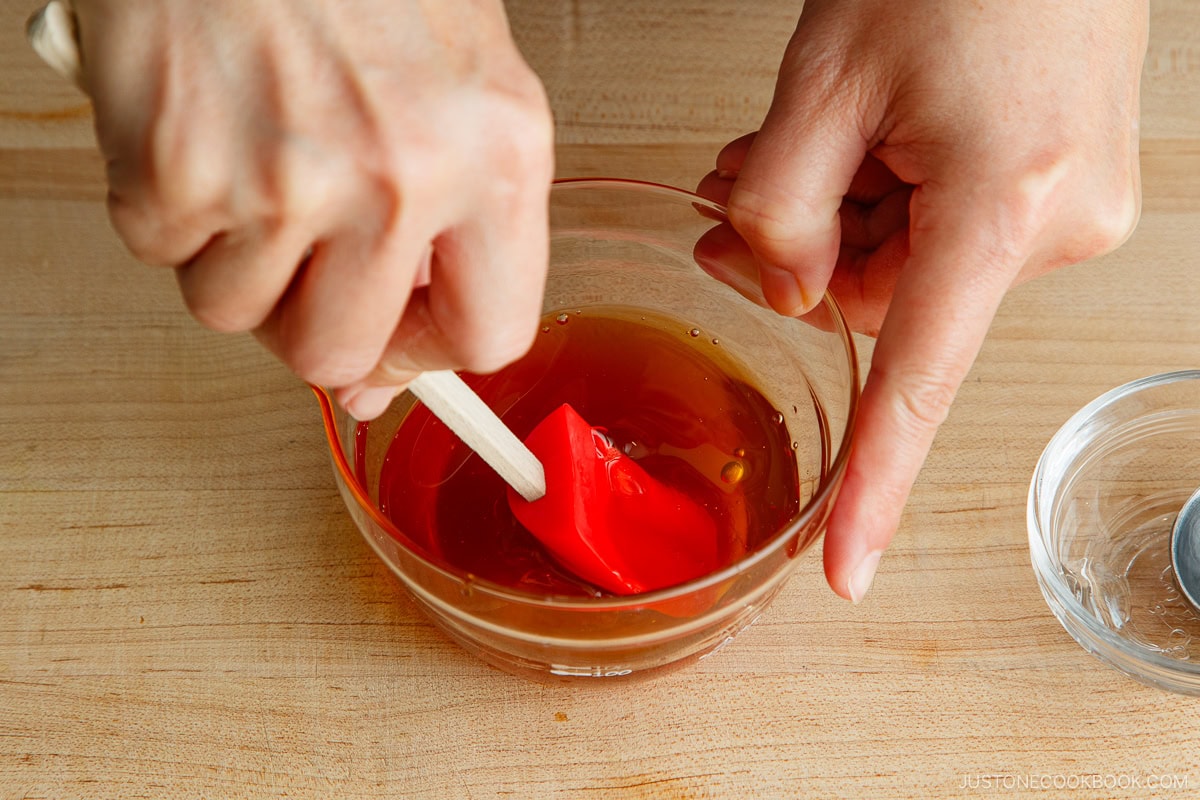
- Whisk the eggs and sugar for 5 minutes on Speed 10 (for this KitchenAid). This setting worked perfectly. The batter should quadruple in volume and fall in ribbons. If you double the recipe, you can still whisk for 5 minutes on Speed 10.
- Don’t overmix the batter after adding the honey mixture and flour. Just 30 seconds after each addition is enough. Overmixing could deflate the egg mixture and overdevelop the gluten in the flour.
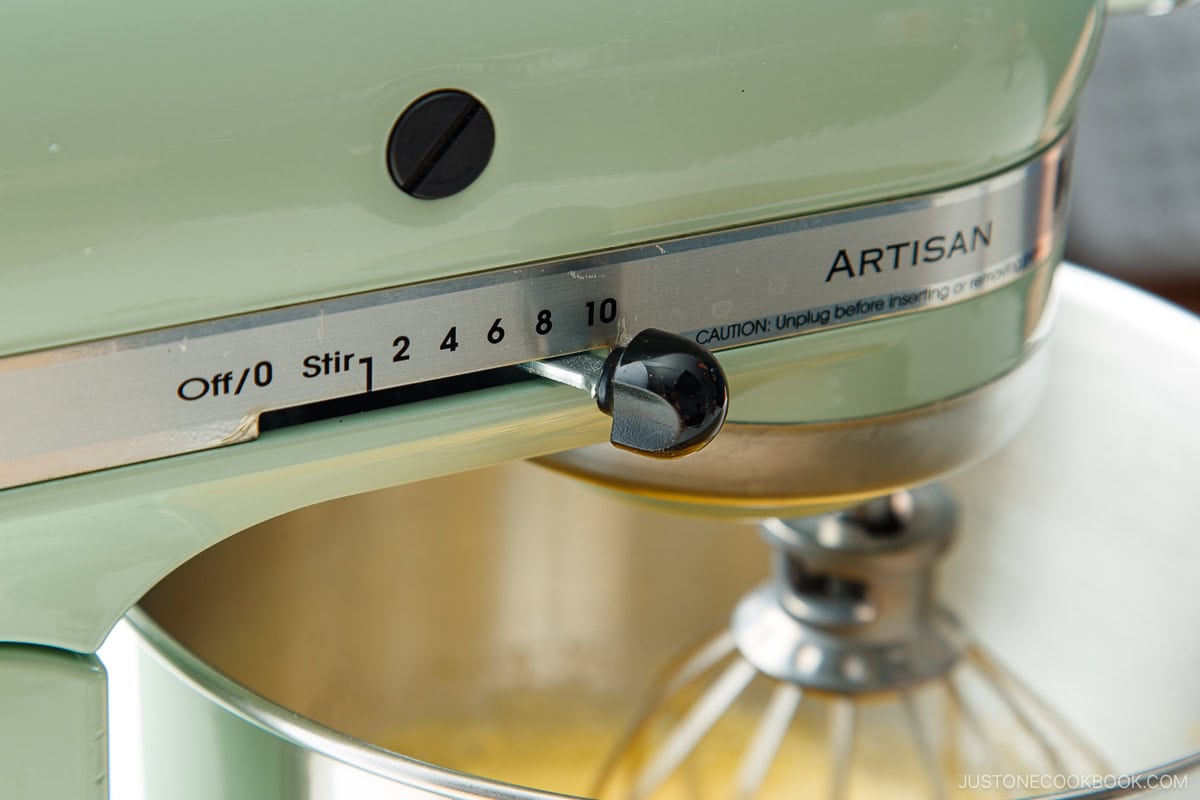
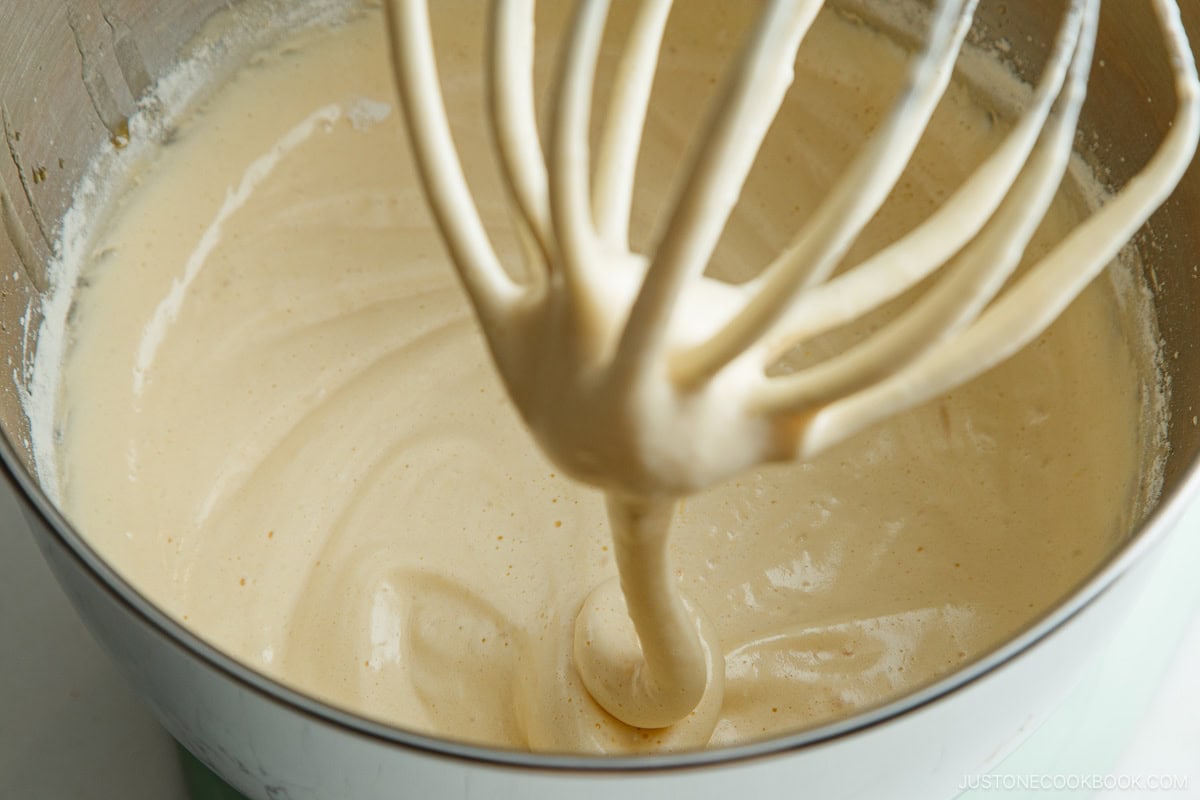
- Mix the batter during baking with an offset spatula. The Japanese mixing technique called awakiri (泡切り, “bubble cut“) helps to even out the batter‘s temperature so the cake will rise without cracking.
- Use a serrated knife with small teeth. I’ve tried all kinds of knives to cut castella. The only one that worked well was the SUNCRAFT CUT brand bread knife, as per JOC baking assistant Haruka’s advice.
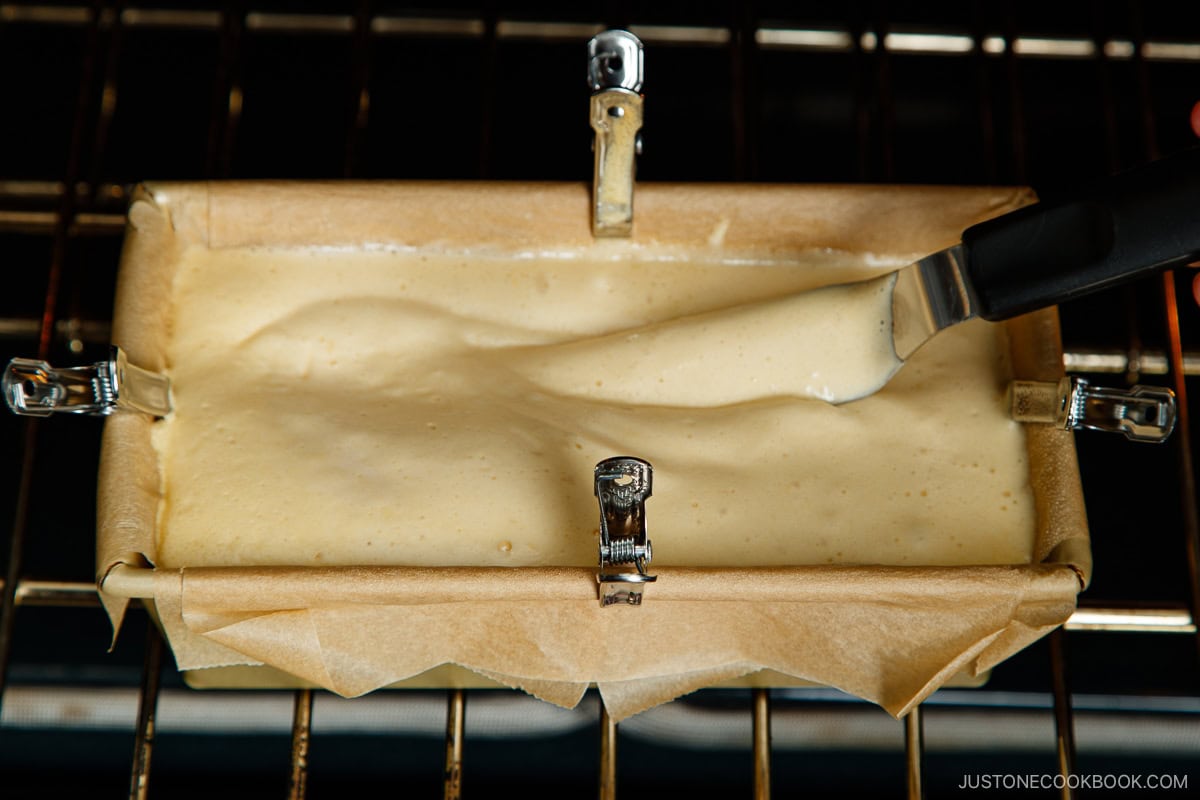
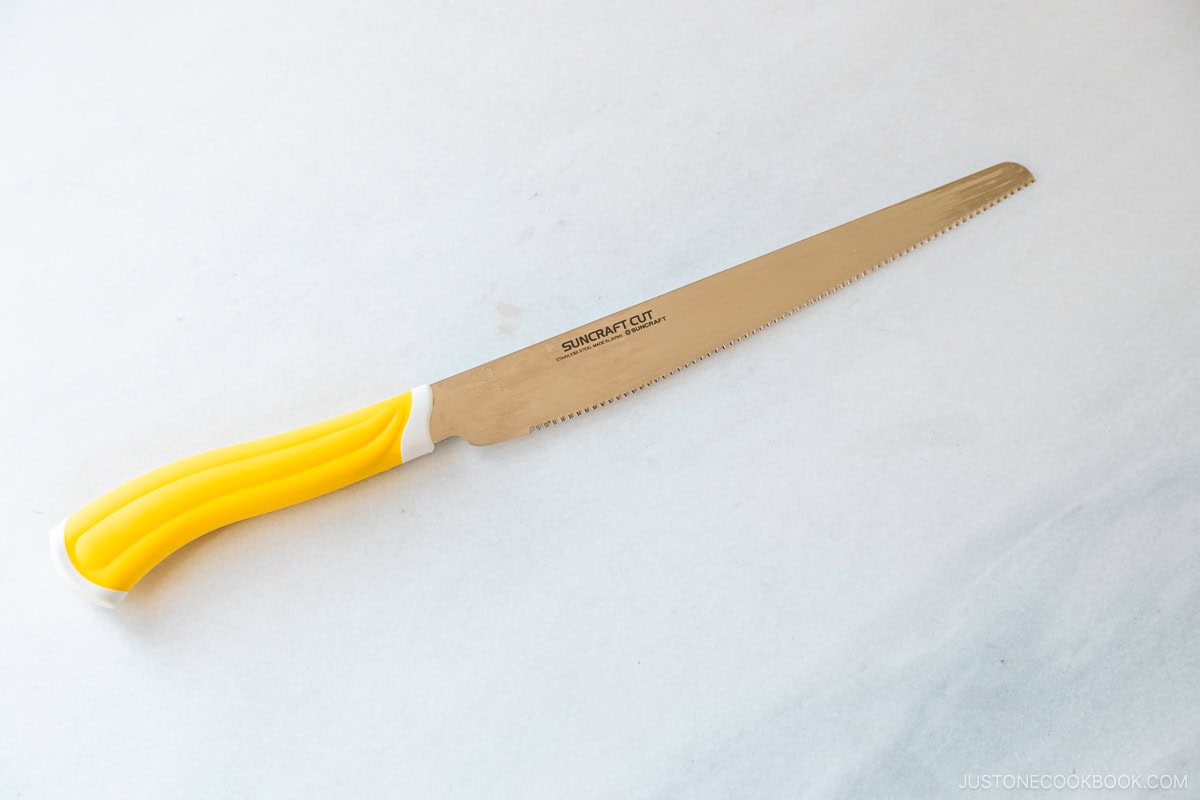
How to Store
To save for later, wrap the individual pieces with plastic wrap. Store for up to 3-4 days at room temperature, 5–7 days in the refrigerator, and 1 month in the freezer.
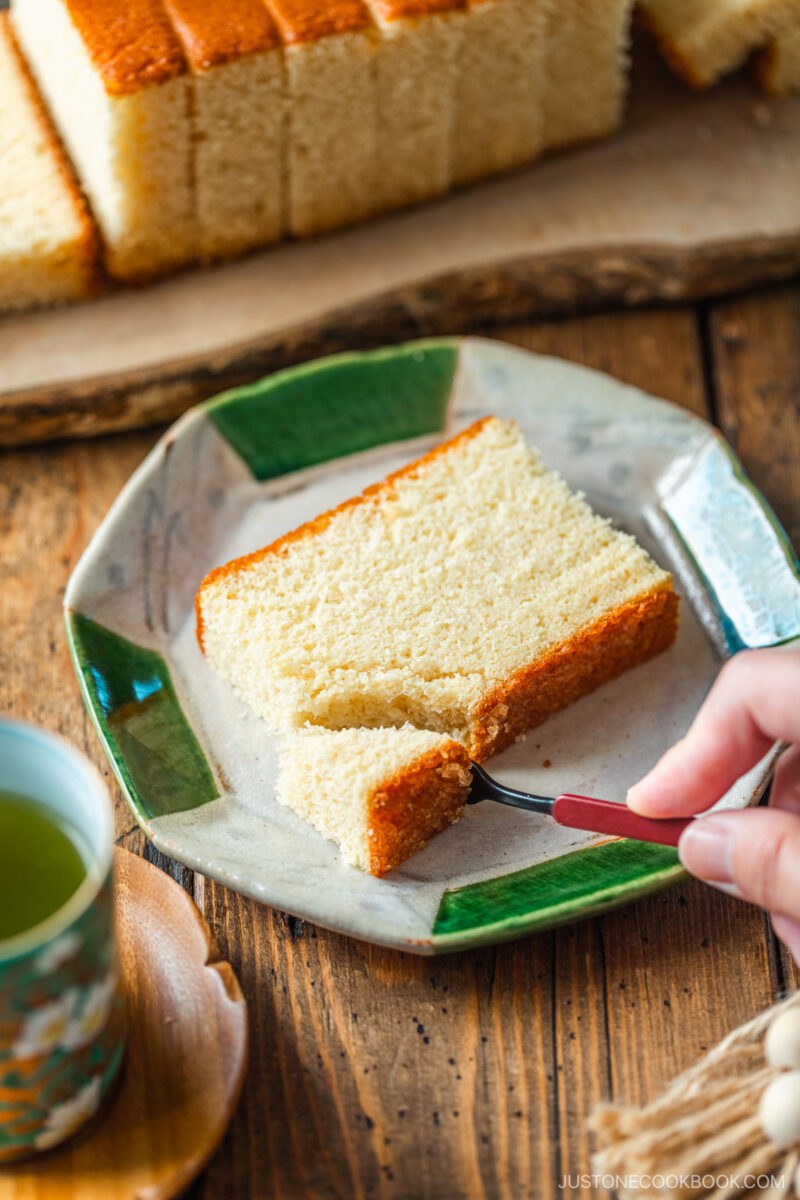
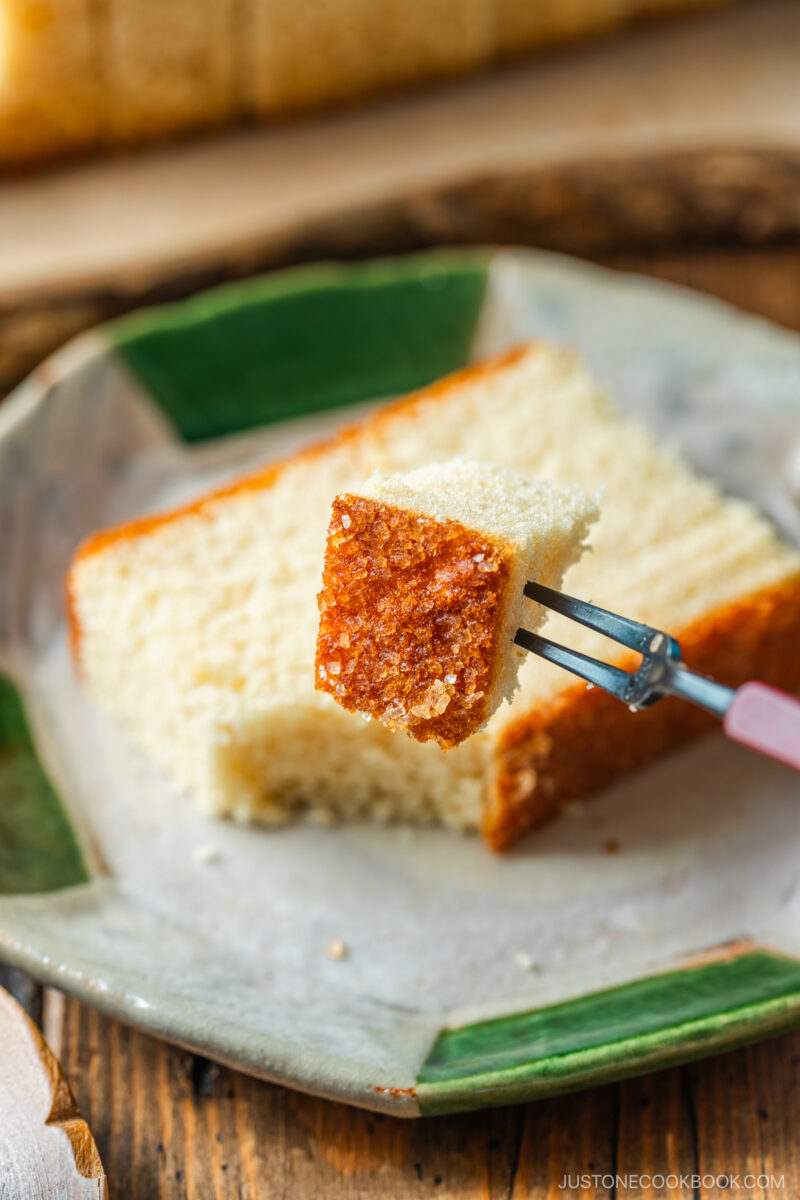
Frequently Asked Questions
For authentic Japanese castella, you need bread flour. It gives the cake an elastic, bouncy texture. All-purpose flour just cannot produce this texture. The high protein in bread flour also helps the castella achieve a chewier and denser crumb than a regular sponge cake made with cake flour, which has less gluten.
If your cake top starts to wrinkle, you may have overbaked it. If so, your cake will be drier inside and have hard, dry edges. Next time, start checking 10 minutes sooner to see if the cake is done. Also, I encourage you to check your oven’s temperature with an oven thermometer, as the actual temperature inside may differ from the display setting. Every oven is different; please adjust your setting to achieve the correct actual temperature.
You may have underbaked your cake if the top sticks to the Silpat mat. When the moisture in the cake hasn’t fully evaporated, it’s more likely to stick (the top of the cake is moist and soggy) and also more prone to shrinking. Next time, try baking it a few minutes longer until the top is a bit darker and drier (but not wrinkled). Also, your oven’s actual temperature may be lower than what your oven displays. Next time, check it with an oven thermometer and adjust the setting accordingly.
Taiwanese castella cake (or Taiwanese soufflé castella) is an adaptation of Japanese castella cake. It’s jiggly, eggy, and pillowy soft while the Japanese version is denser. Taiwanese castella is similar to a soufflé, where you separate the egg yolks and whites, then whip the egg whites to medium peaks. You fold this meringue into the egg yolk mixture, pour the batter into a cake pan, and bake it in a water bath inside a baking tray. Taiwanese castella also uses different ingredients like cake flour, oil or unsalted butter, vanilla extract, milk, lemon juice, or vinegar.
What to Serve with Castella
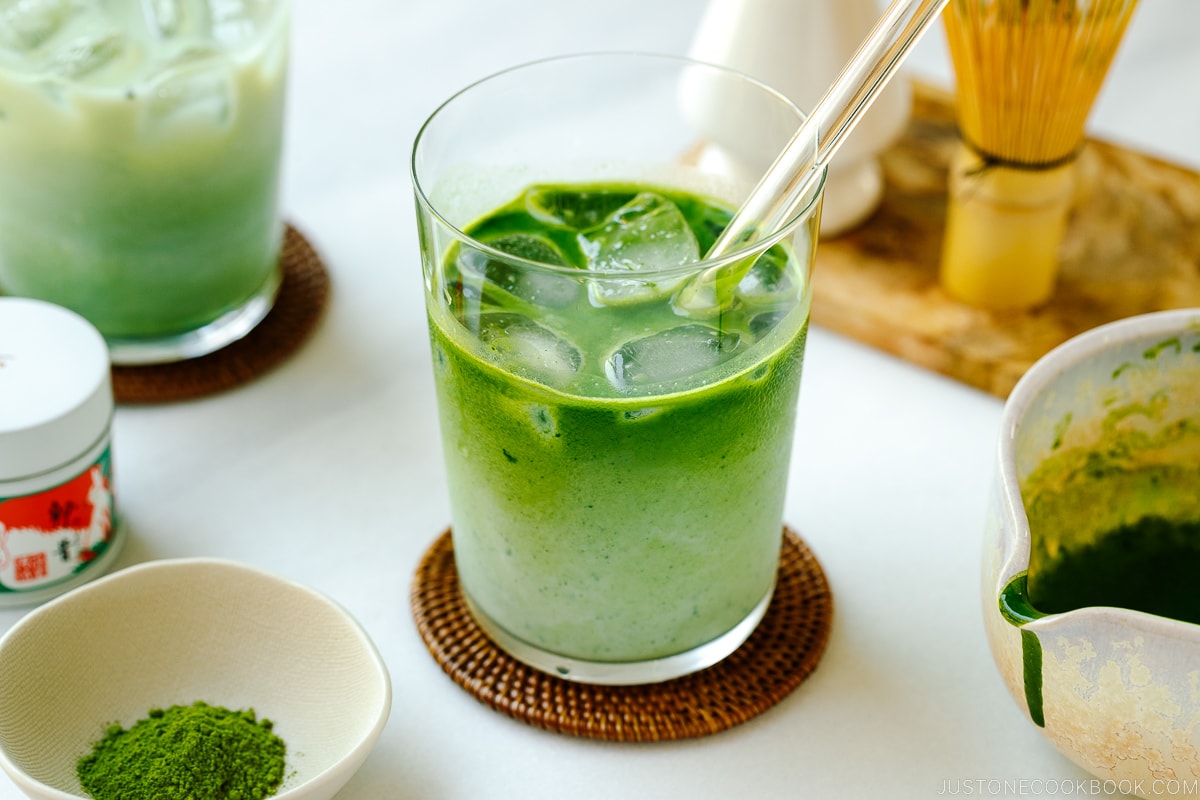
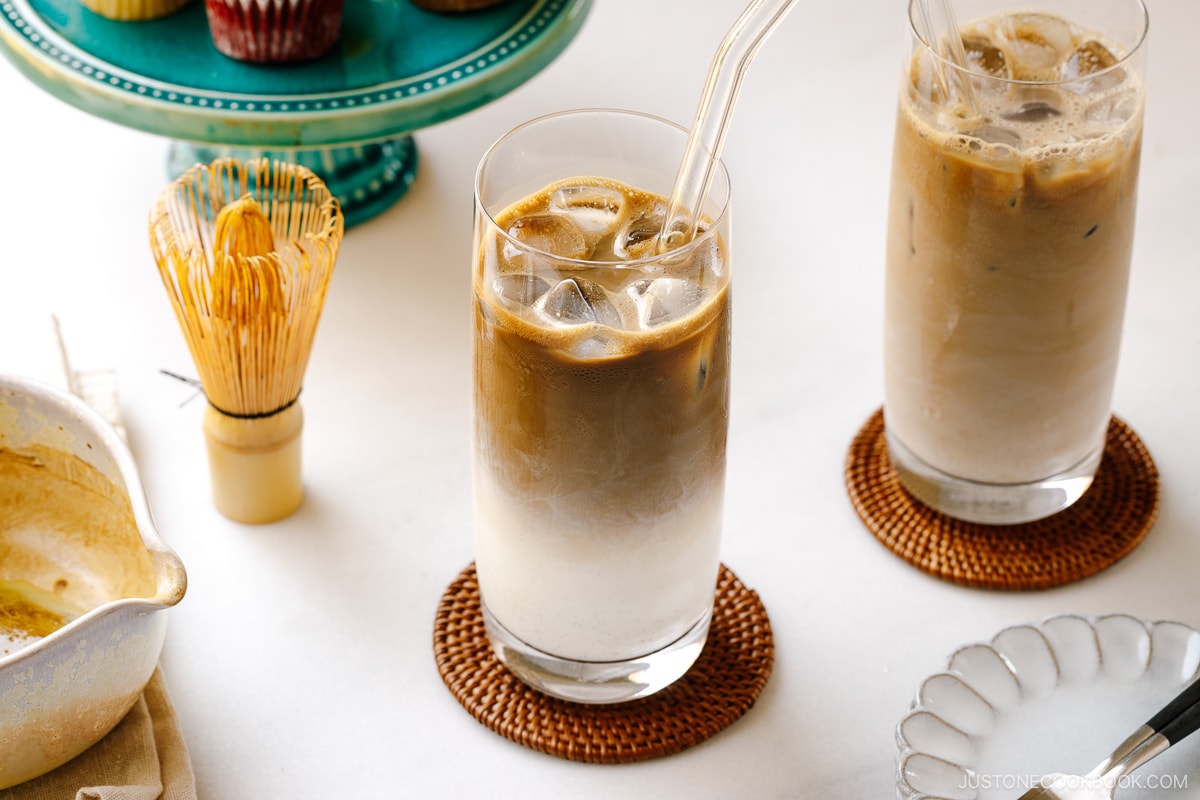
- Green Tea
- Japanese Iced Coffee
- Iced Matcha Latte
- Hojicha Latte
- In a Japanese Fruit Parfait
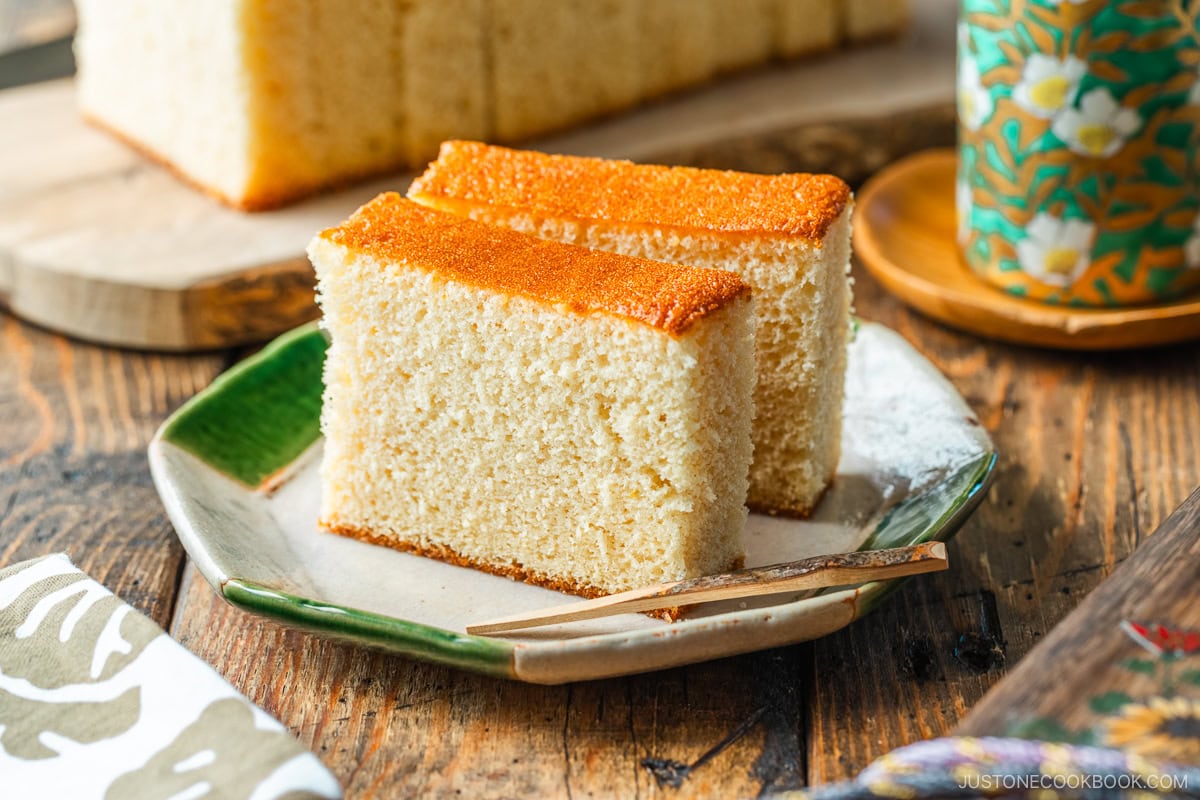
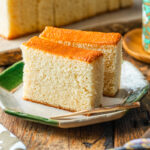
Japanese Castella Cake
Video
Ingredients
- 2 Tbsp water
- 3 Tbsp honey
- 1 Tbsp mizuame syrup (glutinous starch syrup) (use the thick type sold in a jar; see the blog post for details; skip if you can't find it)
- 100 g bread flour (¾ cup + 1½ Tbsp; weigh your flour or use the “fluff and sprinkle“ method and level it off)
- 3 large eggs (50 g each w/o shell) (at room temperature—very important!)
- 100 g sugar (½ cup)
- ½ Tbsp white sparkling sugar (you can buy it on Amazon; use zarame coarse sugar if you can find it)
Instructions
Before You Start…
- Please note that this recipe requires a chilling time of 12 hours or overnight.I highly encourage you to weigh your ingredients using a kitchen scale. For weights, click the Metric button above. If you‘re using a cup measure, please follow the “fluff and sprinkle“ method: Fluff your flour with a spoon, sprinkle it into your measuring cup, and level it off. Otherwise, you may scoop more than you need.
- Gather all the ingredients. The eggs must be at room temperature. Preheat the oven to 340ºF (170ºC). For a convection oven, reduce the oven temperature by 25ºF (15ºC) to 295ºF (145ºC). Prepare a spray bottle with water, an offset spatula, and a bamboo skewer. Use a 1 lb baking pan that is light-colored for the best outcome.
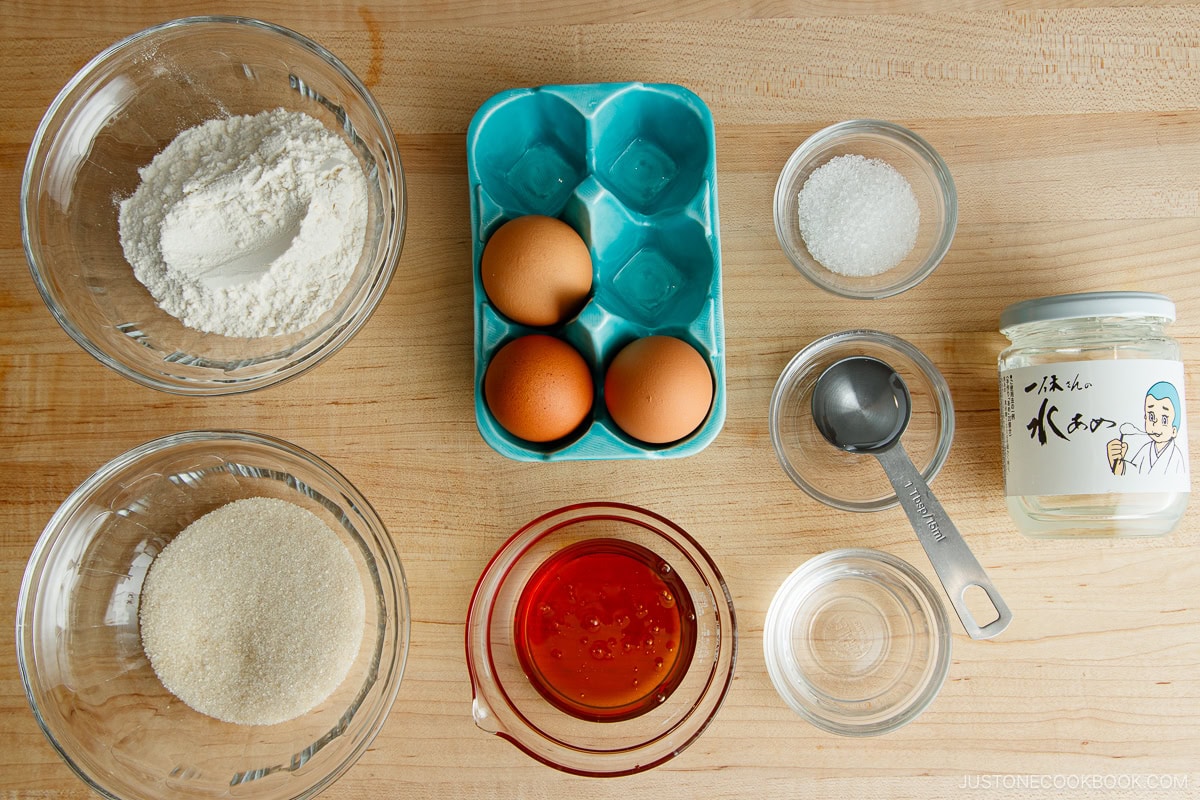
To Line the Baking Pan
- On your work surface, place a sheet of parchment paper that‘s 13 x 16 inches (30 x 40 cm). Set a 1 lb loaf pan on top (I use a light-colored 1 lb loaf pan that‘s 8½ x 4½ x 2¾ inches or 22 x 11 x 7 cm). Mark the four corners of the loaf pan on the paper. Fold and crease the paper on all four sides following the corner marks.
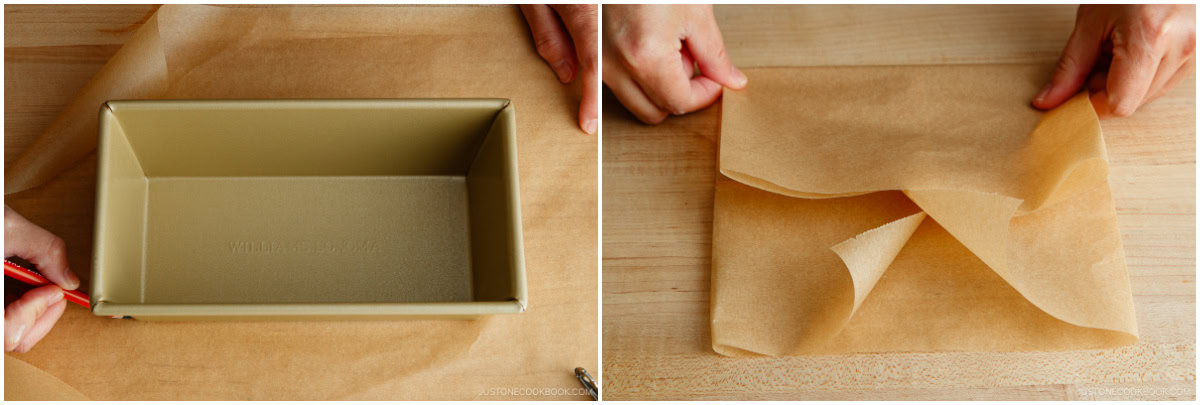
- Unfold the paper so that the long side of the creased rectangle is in front of you. On the two crease lines pointing toward you, cut slits up to the rectangle‘s left and right corners. Rotate the paper and cut two slits on the opposite long side. You will have four slits total. Then, place the paper in the baking pan, folding and layering the flaps to fit.
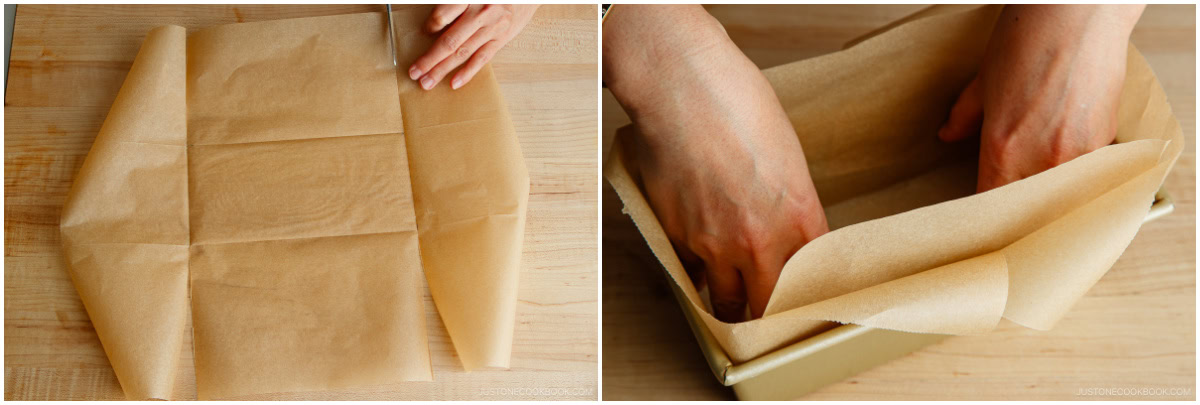
- Cut a slit in each of the corner flaps down to the top edge of the pan. Then, fold down the paper over the pan‘s edges.
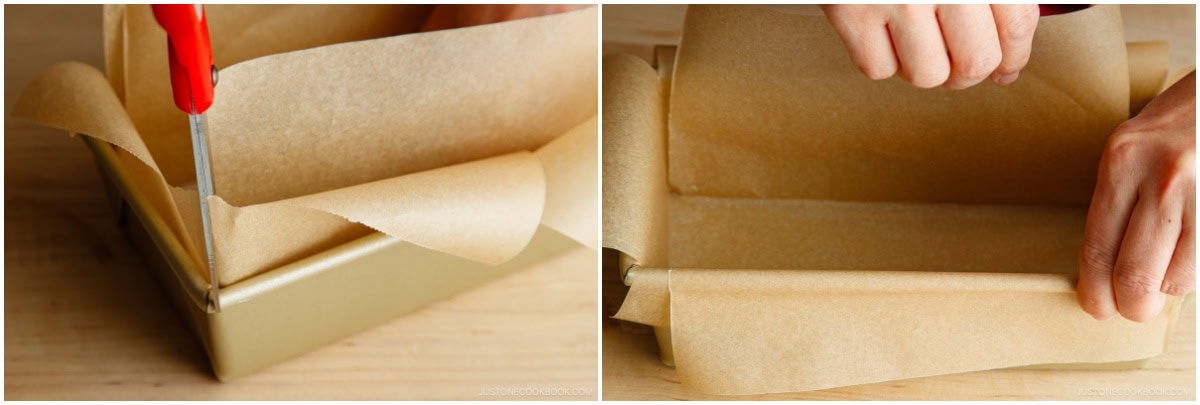
- Secure the folded paper onto the edges with stainless steel clips to keep the lining from moving when you mix the batter during baking.
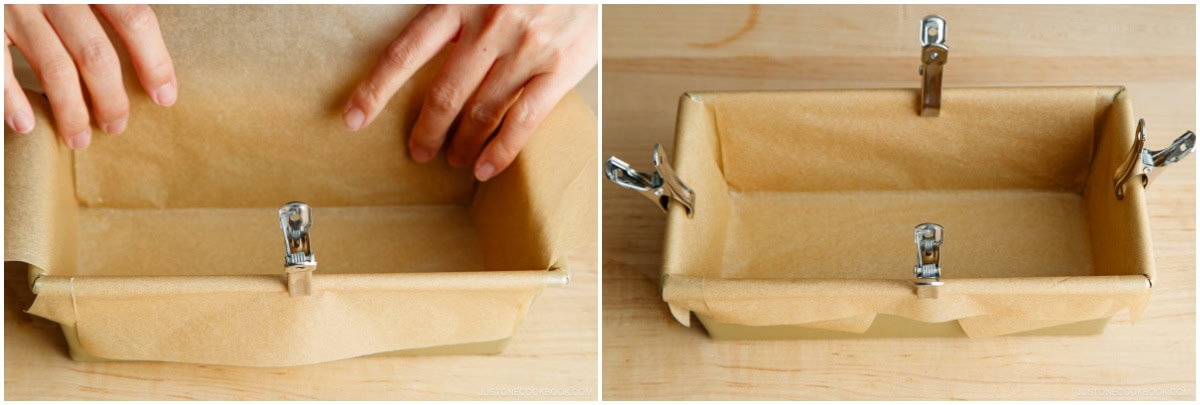
To Prepare the Ingredients
- Combine 2 Tbsp water and 3 Tbsp honey in a small bowl. Then, add 1 Tbsp mizuame syrup (glutinous starch syrup). It‘s super sticky and extremely thick, so use a mini spatula to scrape it from the measuring spoon.
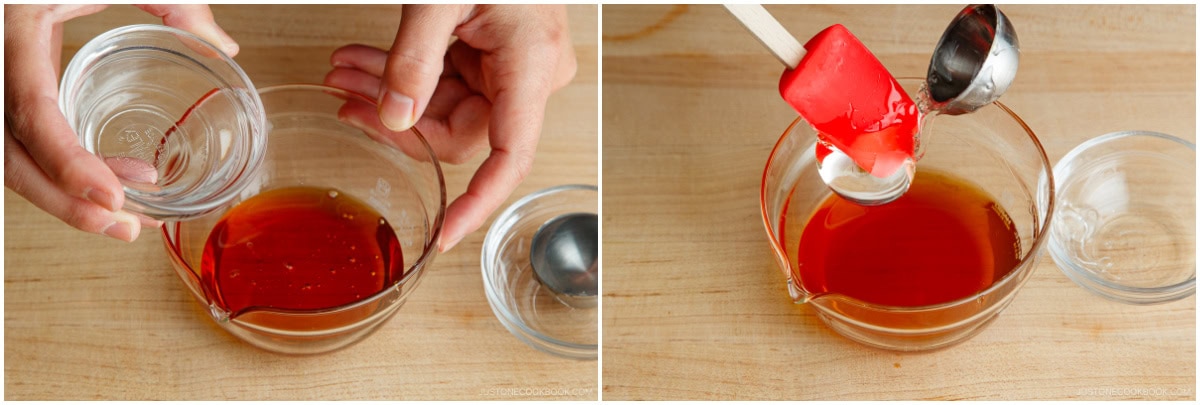
- Take your time to dissolve the mizuame. Press down and mash the mizuame with the mini spatula to facilitate dissolving. Do not microwave the mixture as we do not want to increase the temperature of the batter. Set aside.
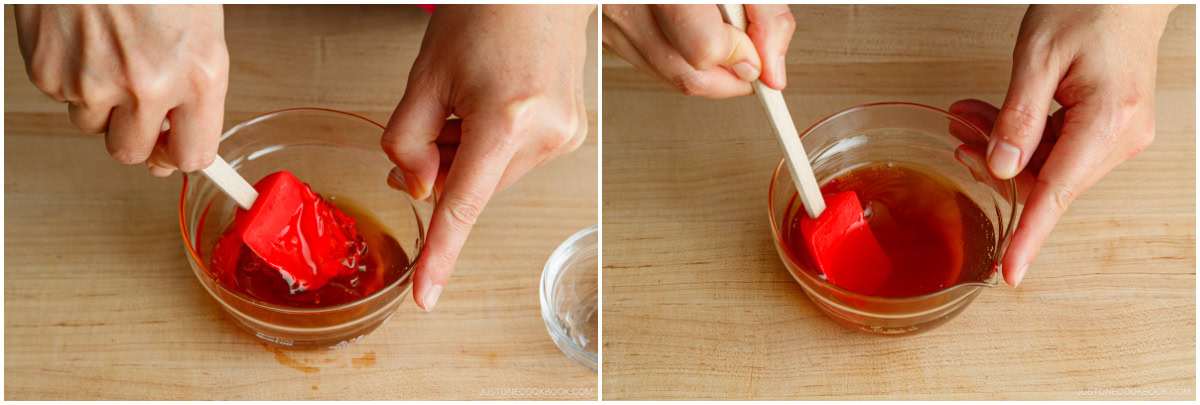
- Sift 100 g bread flour with either a sifter or fine-meshed strainer. Hold the strainer‘s handle with one hand as you gently tap the strainer with the other, and the flour will gradually sift through. Tip: Why bread flour? It gives the cake an elastic, bouncy texture that you cannot achieve with all-purpose flour.
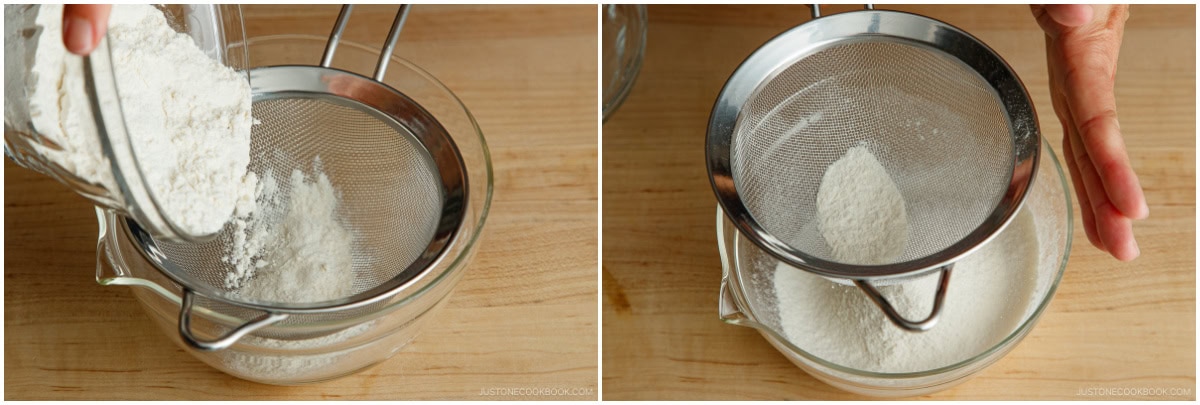
- In the bowl of a stand mixer, crack 3 large eggs (50 g each w/o shell) that are at room temperature. Add 100 g sugar.
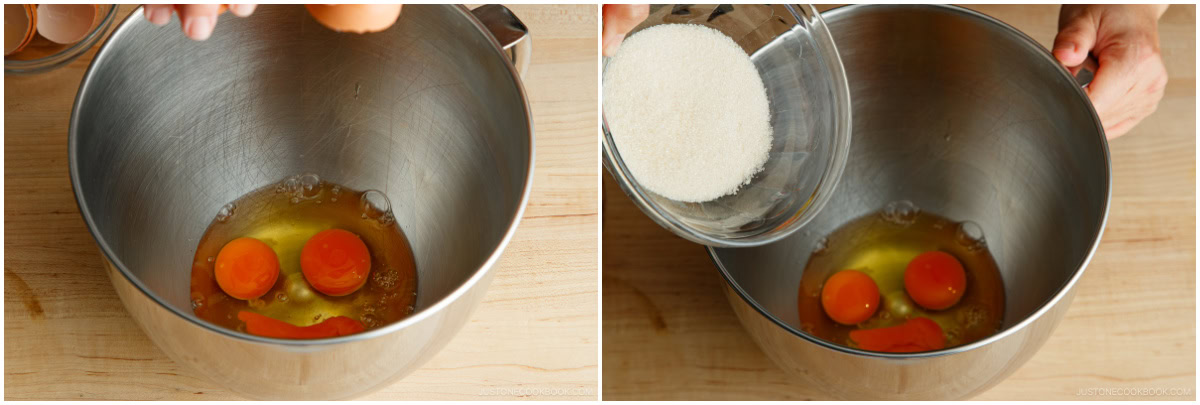
To Mix the Batter
- Fit a stand mixer with the whisk attachment and vigorously beat the eggs and sugar on high speed (Speed 10) for 5 minutes without stopping. If you beat the eggs with a handheld mixer, it will take more time.
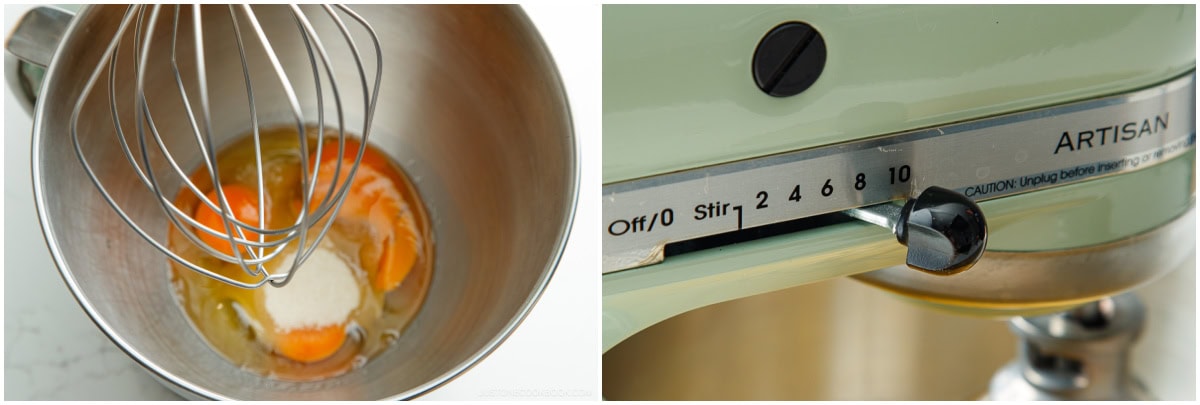
- The beaten eggs will quadruple in volume and have a thick texture and pale yellow color.
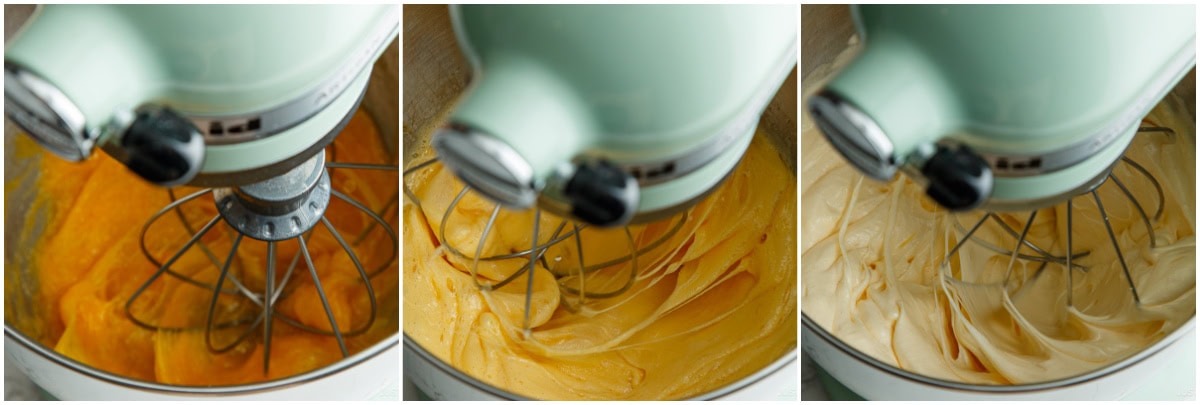
- When you stop the mixer and lift the whisk attachment, the mixture should fall in ribbons.
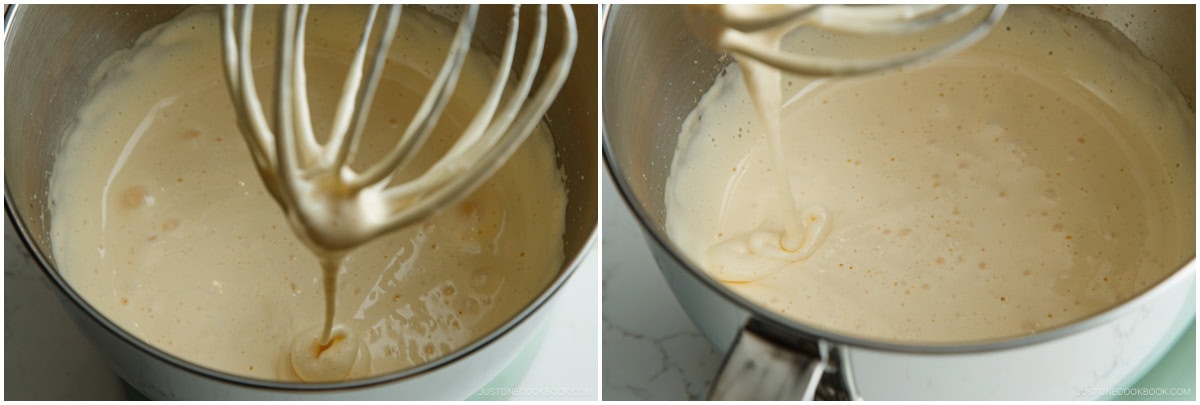
- Gradually add the honey mixture to the batter while whisking on low speed (Speed 2) until combined, about 30 seconds.
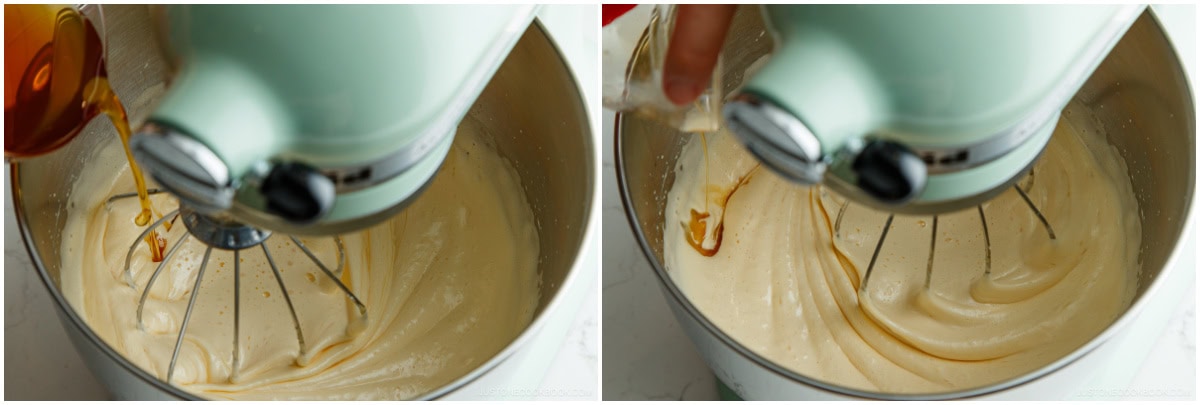
- Gradually add the bread flour while whisking on low speed (Stir) until just combined, for about 30 seconds. Do not overmix.
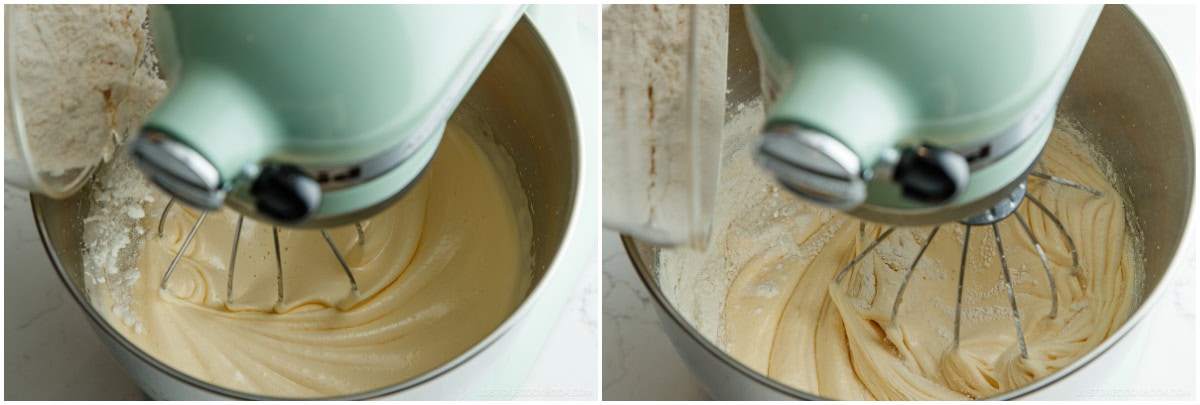
- When the flour is just combined, stop whisking. When you lift the whisk, the batter should fall in ribbons.
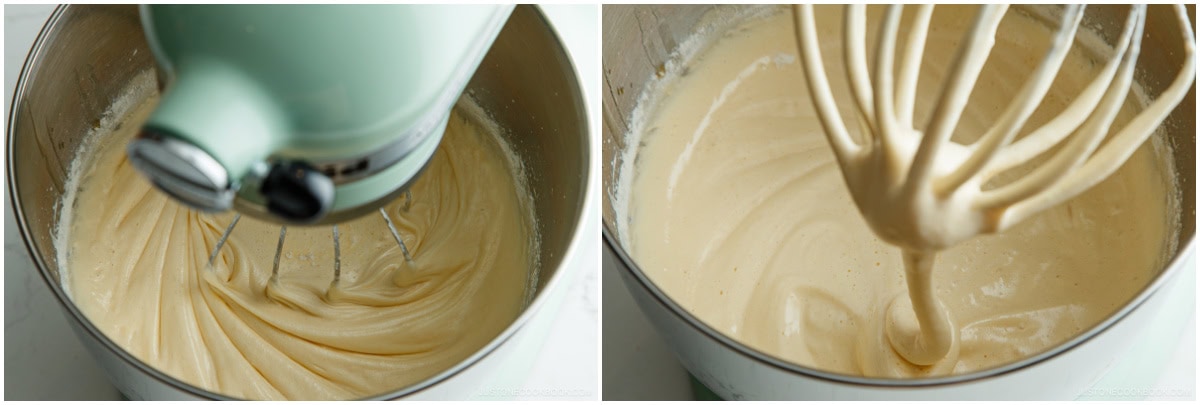
- Using a silicone spatula, scrape the batter from the bowl‘s sides and bottom and gently fold the batter a few times. Next, sprinkle ½ Tbsp white sparkling sugar on the bottom of the lined pan. This sugar will add a crunchy texture to the cake‘s bottom and help retain moisture.
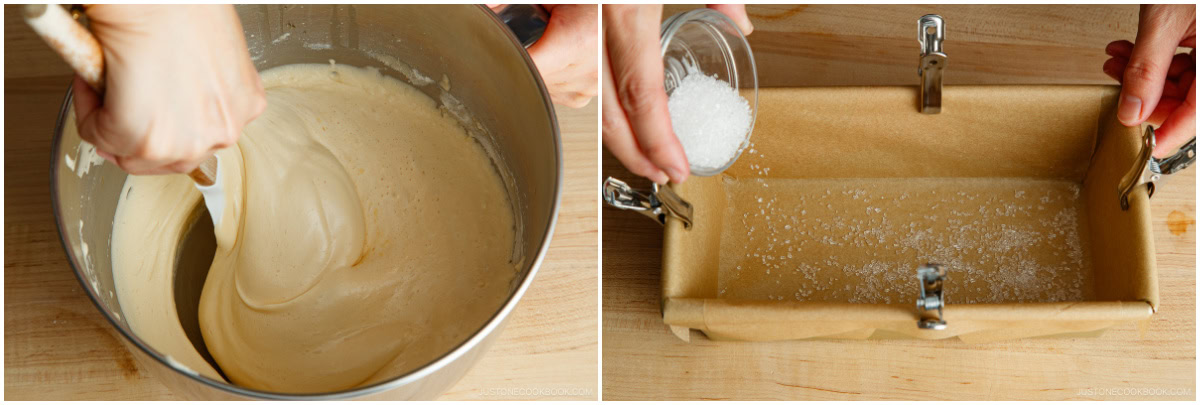
- Pour the batter into the cake pan in just one spot. This helps to minimize air pockets and smooth the top of the batter. Tip: If your pan is smaller than mine, you‘ll need to add the excess batter to another smaller pan and use a shorter bake time.
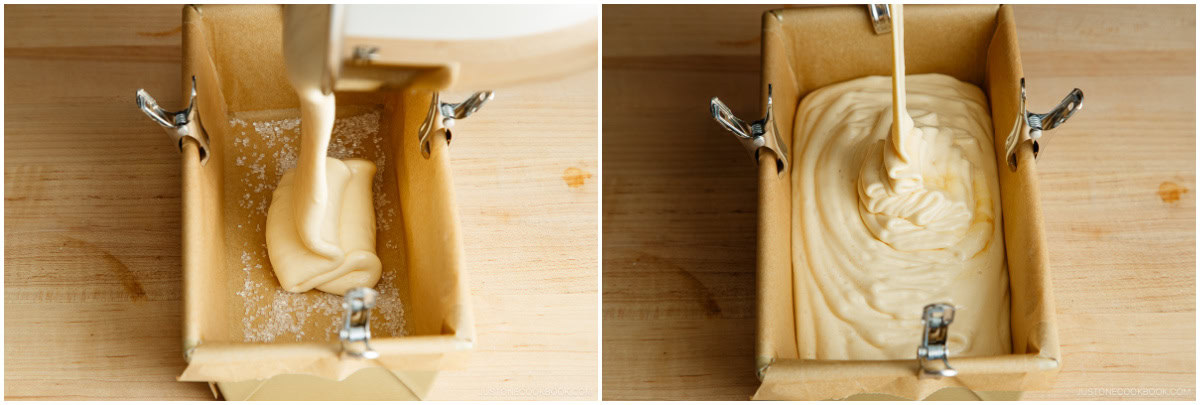
- To level the batter and help remove air pockets, hold the cake pan 2 inches above the counter and drop it flat onto the counter. Then, draw a zigzag line through the batter with a bamboo skewer to further eliminate air bubbles.
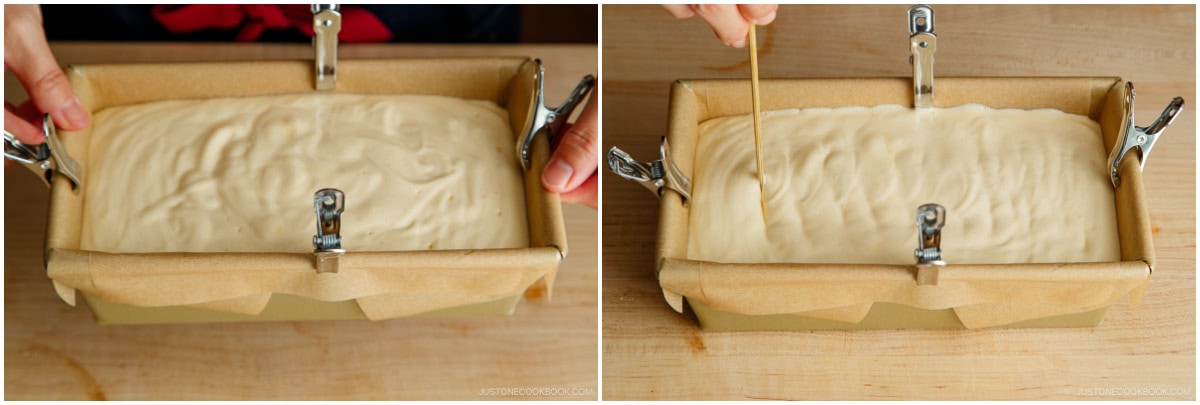
To Bake
- Place the cake pan on the middle rack of the preheated oven at 340ºF (170ºC). Close the oven door and set a timer for 2 minutes.
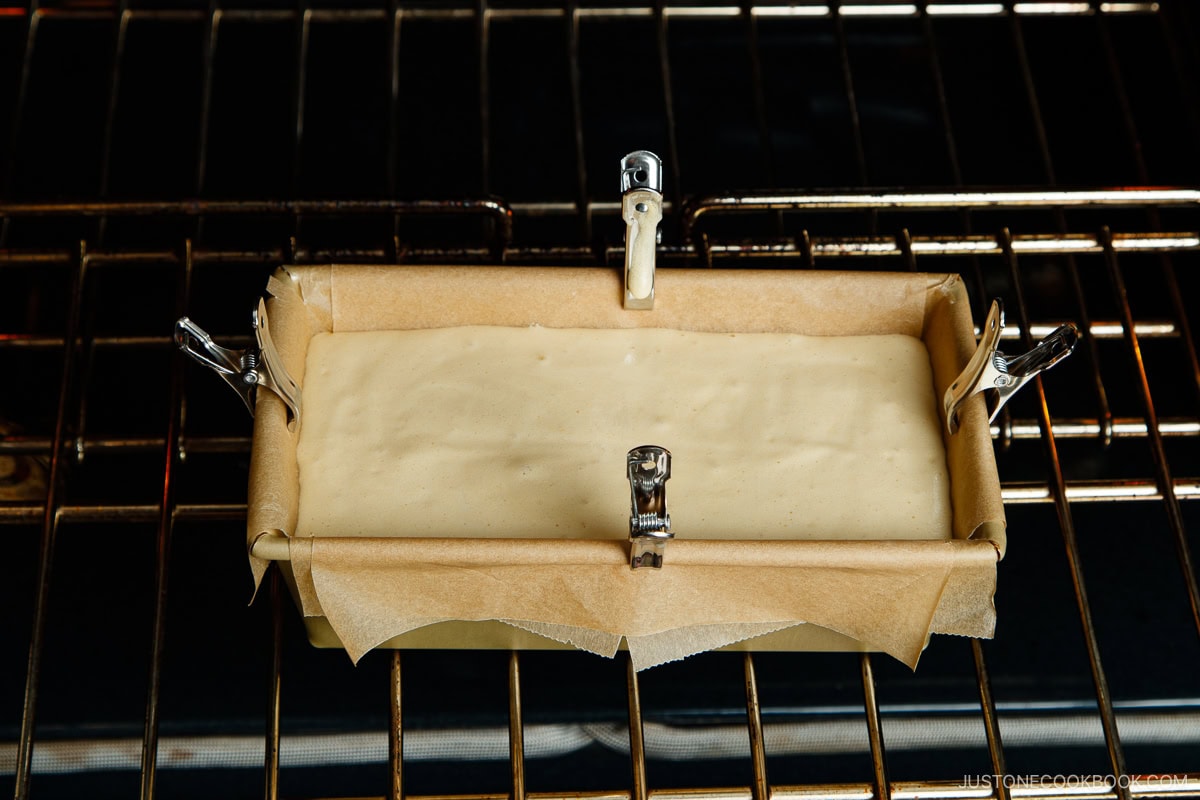
- After the 2-minute timer beeps, reset the timer to 1 minute and complete the following several steps over the next minute. First, open the oven and spray twice above the cake batter with the spray bottle.
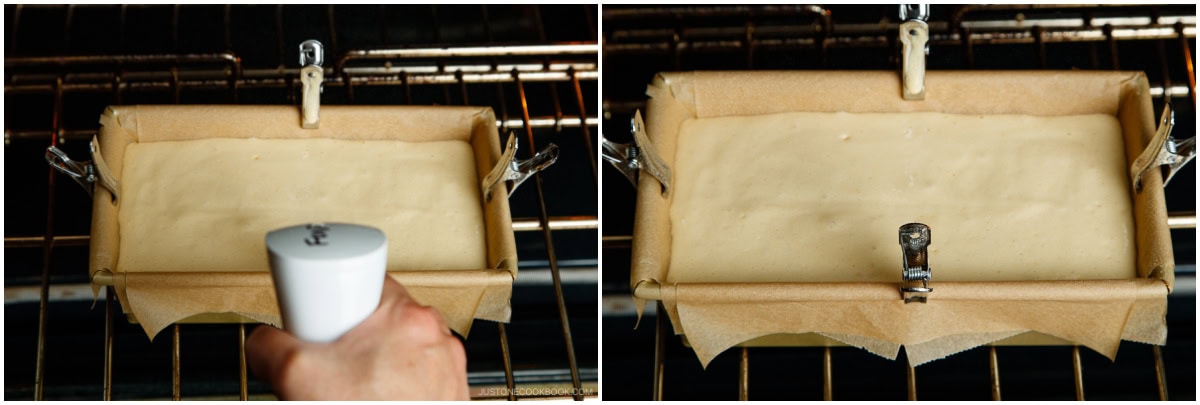
- Next, use an offset spatula to mix and circulate the batter 15–20 times from the left side, without touching the sparkling sugar at the bottom of the pan. This mixing technique, called awakiri (泡切り, “bubble cut“) in Japanese, helps to remove air pockets and even out the batter‘s temperature so the cake rises evenly without cracking.
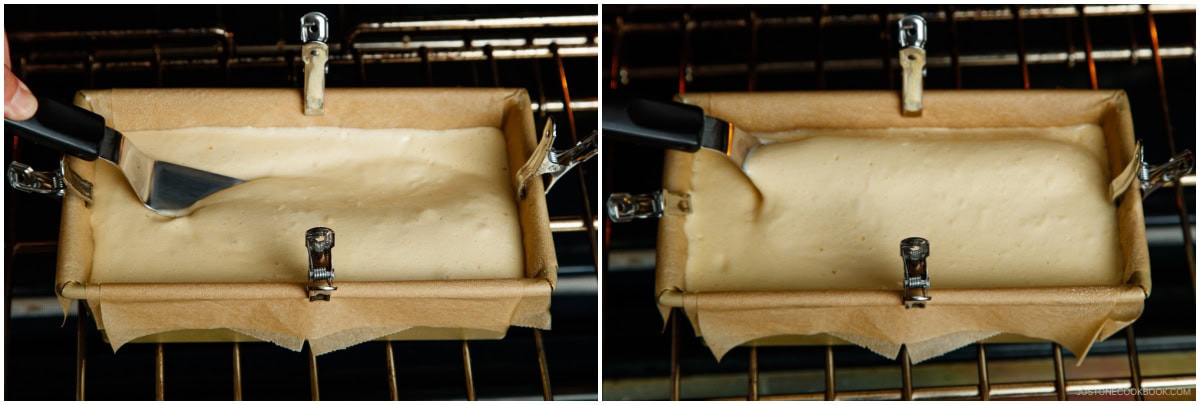
- Finally, mix and circulate the batter 15–20 times from the right side. Shake off the excess batter from the spatula and close the oven door. Reset the timer to 2 minutes.
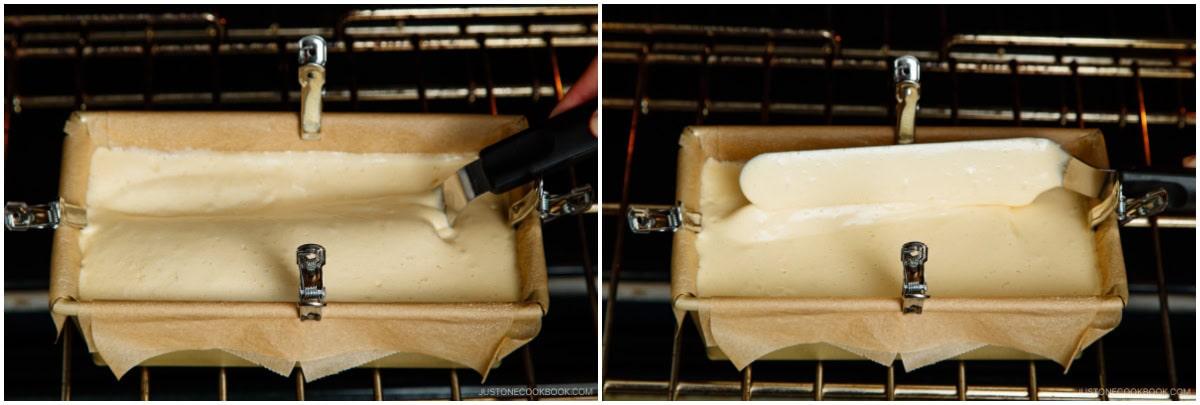
- Repeat this process (Step 2 to Step 4) 3 more times. To recap, when the 2-minute timer beats, set the timer to 1 minute and mist twice with water.
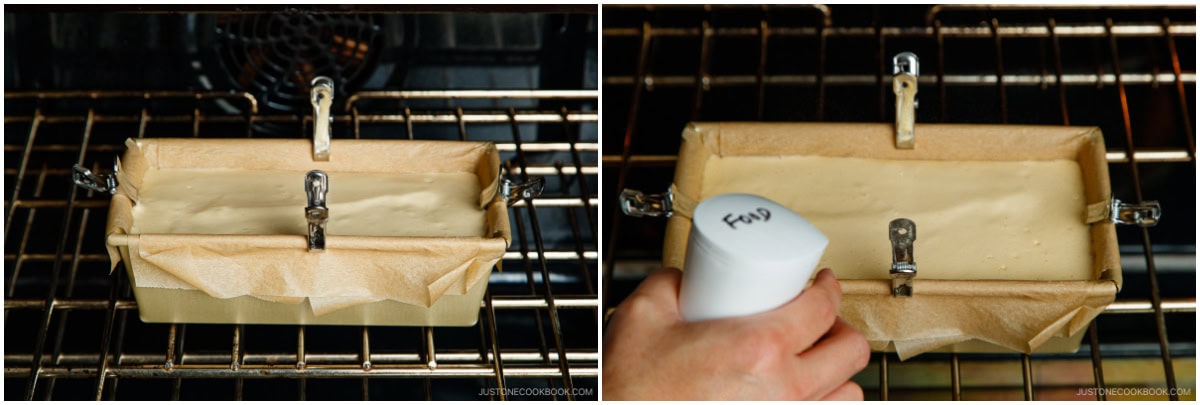
- Mix the batter (15–20 times) from the left side, then mix (15–20 times) from the right side. Close the oven, and reset the time to 2 minutes. Repeat this process 2 more times.
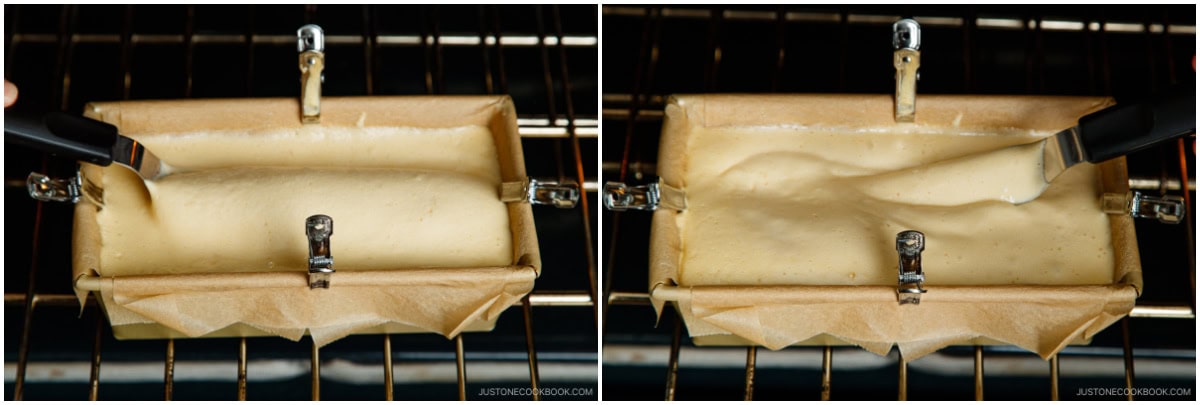
- On the 4th and final time, remove the stainless steel clips. Run the bamboo skewer through the batter. If any of the clips were submerged in the batter, fill in the clip marks in the batter with the skewer.
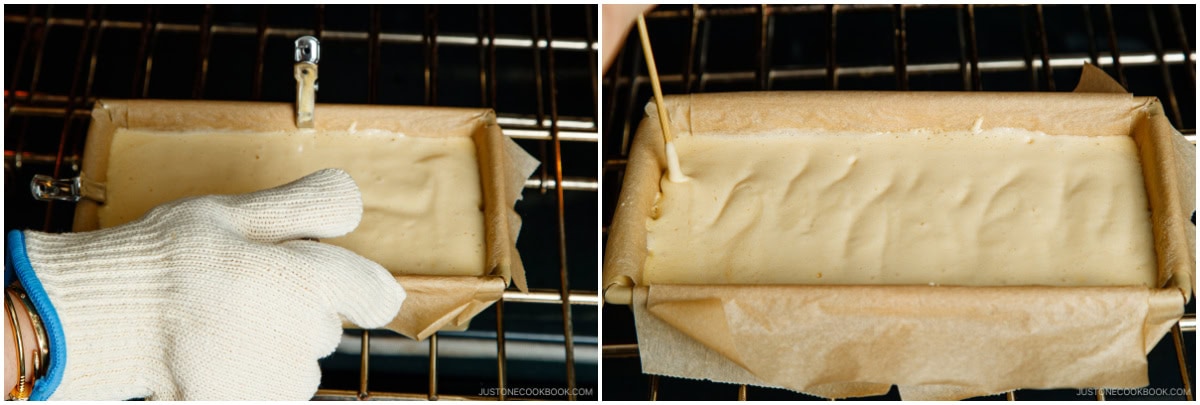
- Spray water into the oven, then bake at 340ºF (170ºC) for another 30 minutes.
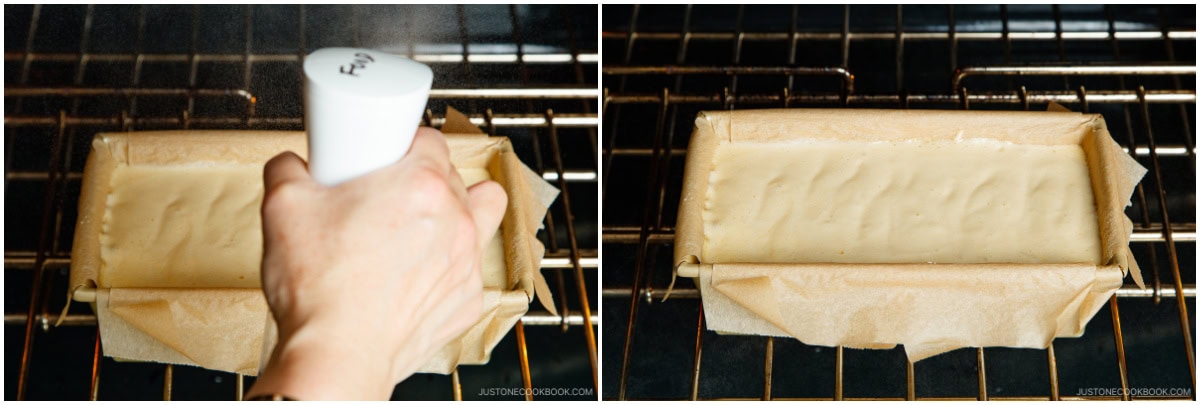
- The cake is done if it bounces back when you touch it with your finger. Tip: If your cake top looks wrinkled, you may have overbaked it. Next time, check earlier to see if it‘s done. I highly encourage you to check your actual oven temperature with an oven thermometer to see if it‘s running hotter than the display setting and adjust accordingly.
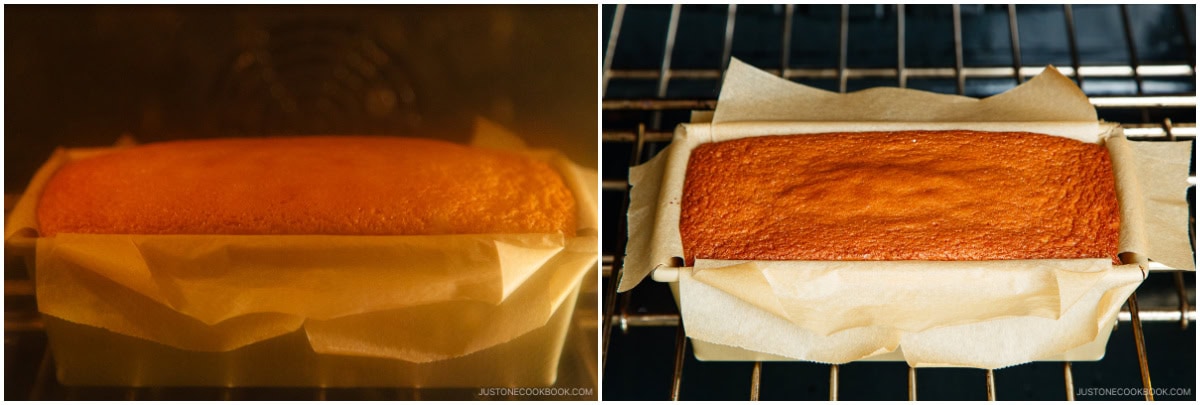
- Remove the castella from the oven. To help prevent shrinkage, drop the pan twice onto the countertop to release the steam vapors from the cake. Next, invert the cake from the pan onto a nonstick silicone mat (I use Silpat). Leave the parchment paper in place. Leave it upside down and let it cool to room temperature, about 45–60 minutes. Tip: I found that a nonstick silicone mat works perfectly here, as parchment paper may stick to the cake. However, if your cake sticks to the silicone mat, you may have underbaked it. Next time, bake it a few minutes longer. Also, check your actual oven temperature to see if its running cooler than the display setting and adjust accordingly.
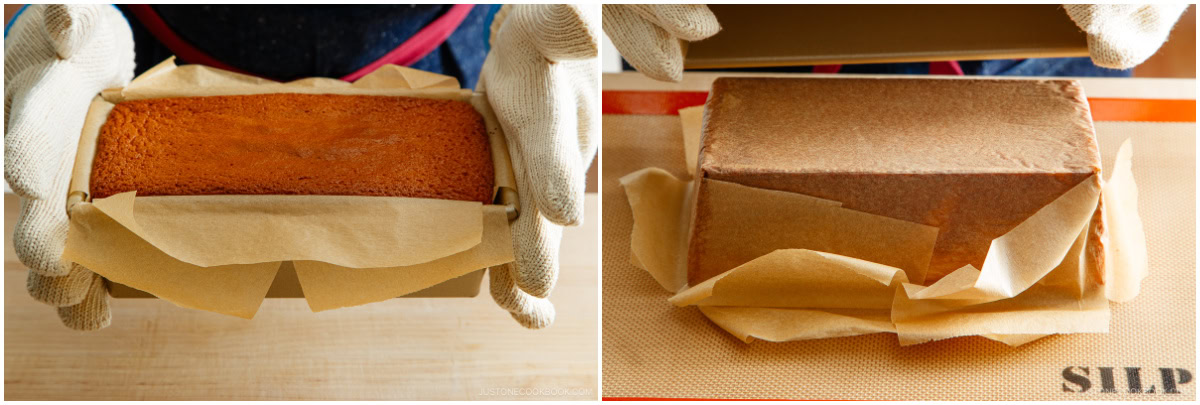
To Chill Overnight
- Once cooled, immediately wrap the cake with its parchment paper in plastic wrap to retain moisture. Then, put the wrapped cake in the refrigerator and store overnight (or at least 12 hours). This will help the cake develop a fine and moist texture.
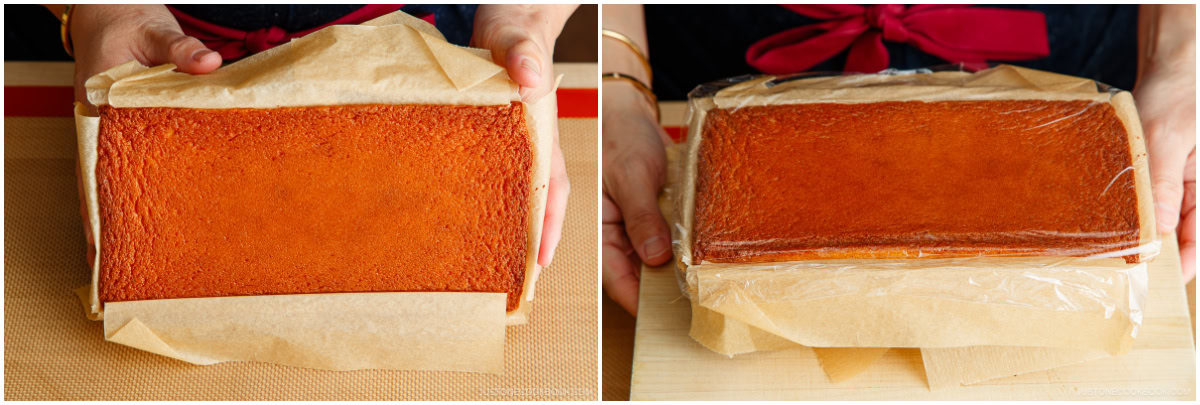
To Trim the Castella
- Remove the cake from the refrigerator. Discard the plastic and carefully peel off the parchment paper.
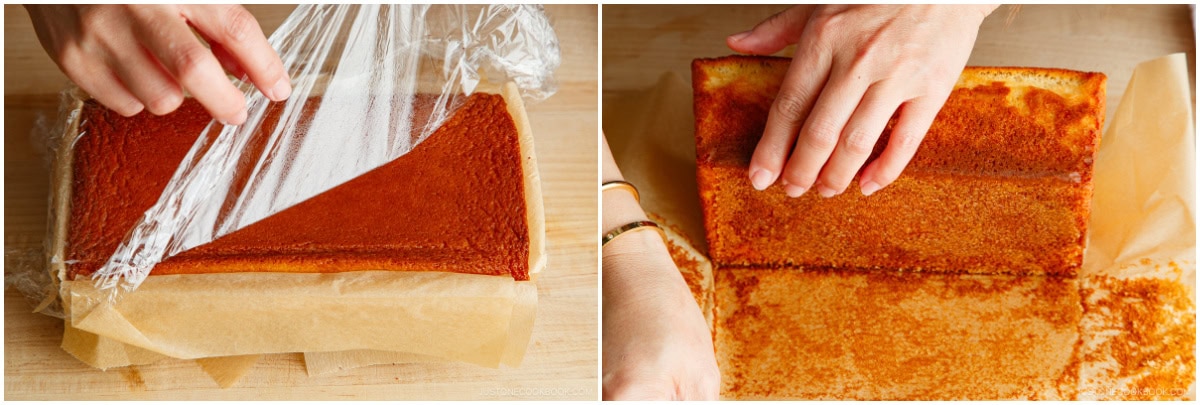
- Now, we‘ll trim the sides of the castella to expose the yellow body of the cake. First, slice off the crust from the two long sides of the cake with a sharp bread knife (I highly recommend using a Suncraft bread knife). Use a damp towel to wipe off the crumbs from the blade after every cut. Tip: These castella crusts are moist and delicious to snack on!
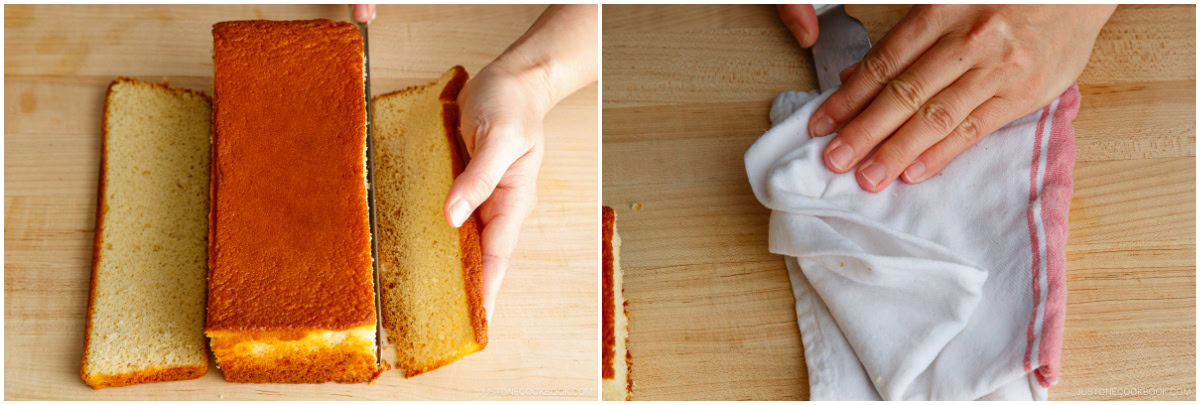
- Then, slice off the crust from the two short sides of the cake. Do not trim the top and bottom of the cake. Cut the cake crosswise into slices about ¾ inch (2 cm) thick. You will get 8–9 slices total.
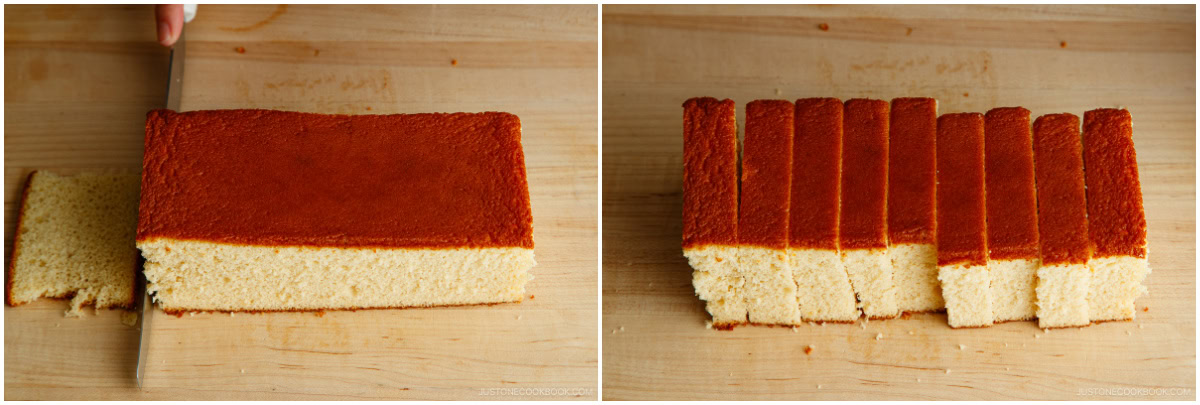
To Serve
- Serve it with tea or coffee, if you‘d like. Enjoy!

To Store
- To save for later, wrap individual pieces with plastic wrap. Store for up to 3–4 days at room temperature, 5–7 days in the refrigerator, and 1 month in the freezer.
Notes
- Preheat oven to 340°F (170°C) for 10 minutes
- Before placing the loaf pan in the oven — 350°F
- When you close the oven door — 324°F
- Before Mix 1 — 339°F
- After Mix 1 — 162°F
- Before Mix 2 — 302°F
- After Mix 2 — 131°F
- Before Mix 3 — 282°F
- After Mix 3 — 142°F
- Before Mix 4 — 271°F
- After Mix 4 — 113°F
- 15 minutes into the 30-minute baking — reached back at 340°F
- 20 minutes into baking — 355°F
- 30 minutes into baking/taking out of the oven — 353ºF
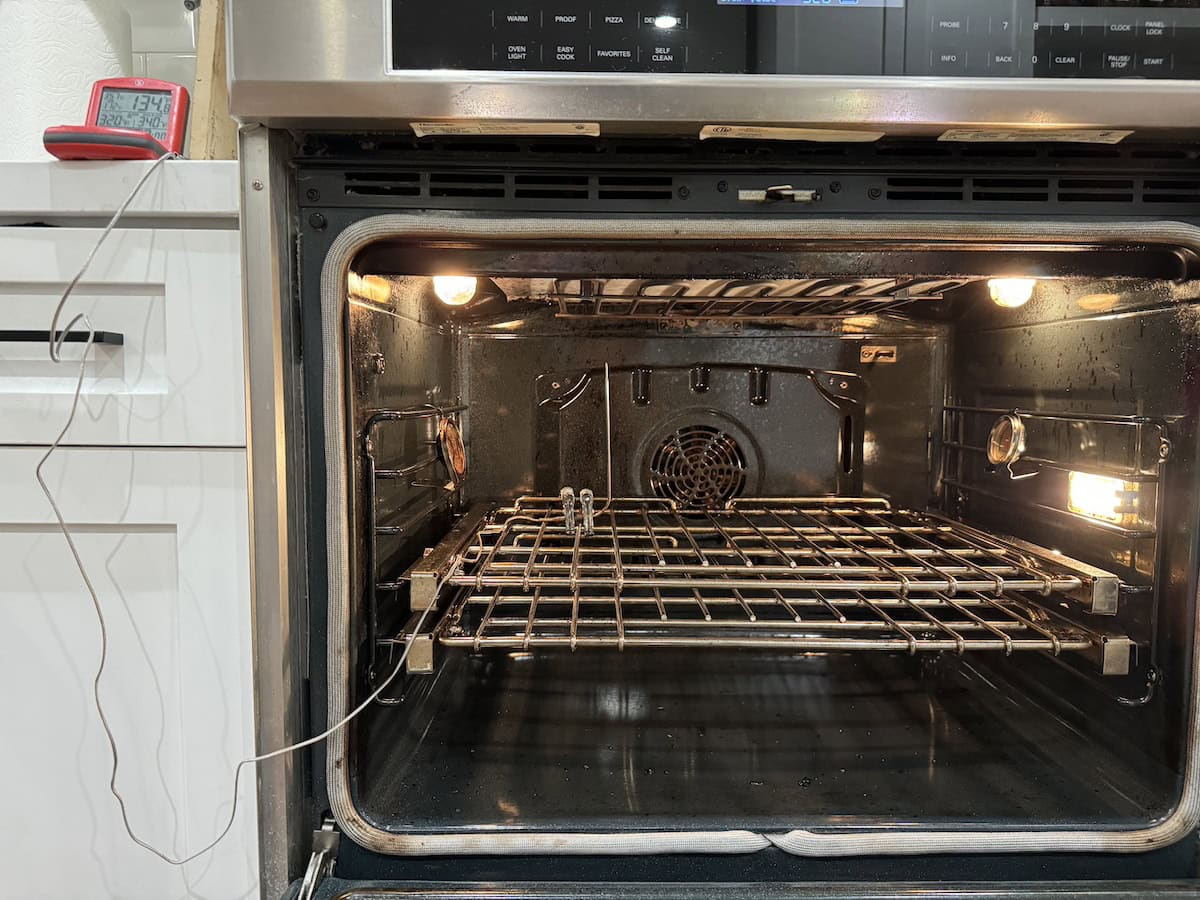
Nutrition
Editor’s Note: This post was originally published on September 14, 2013. It was updated with a slightly revised recipe, helpful tips and techniques, and new images on May 2, 2024, and republished on May 24, 2024.
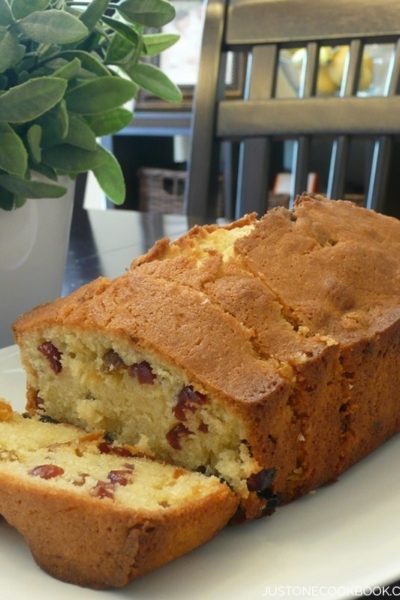
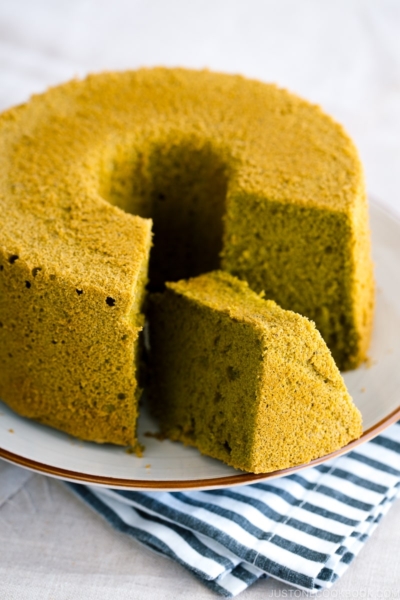
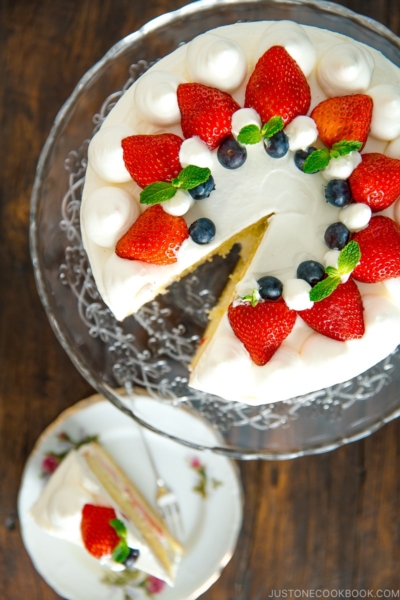
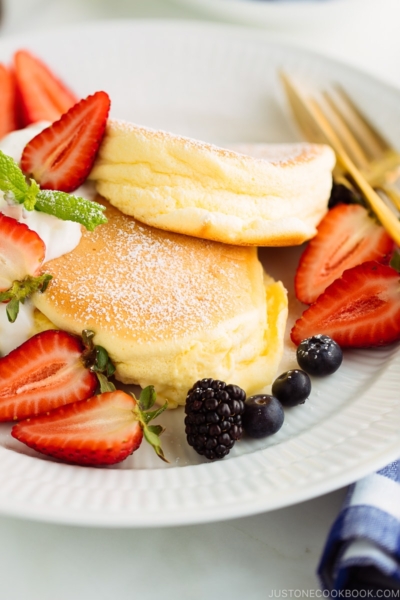
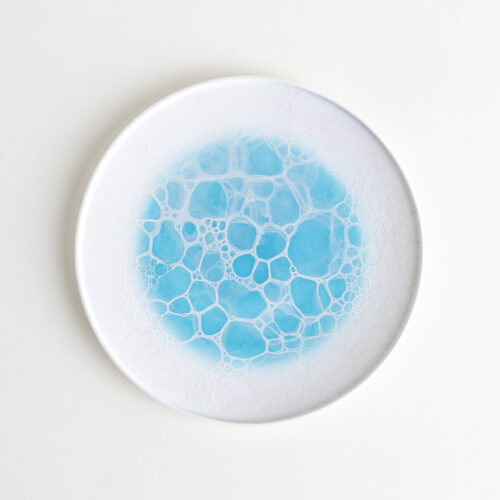
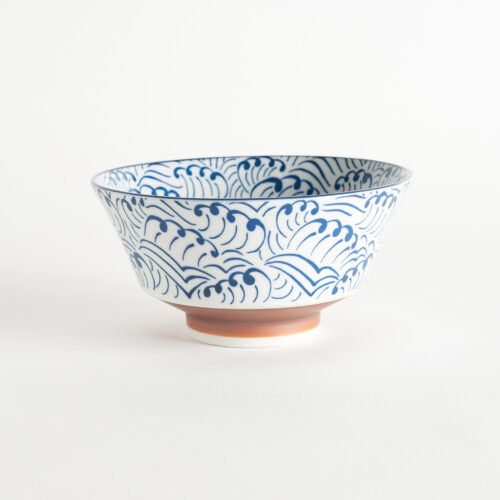
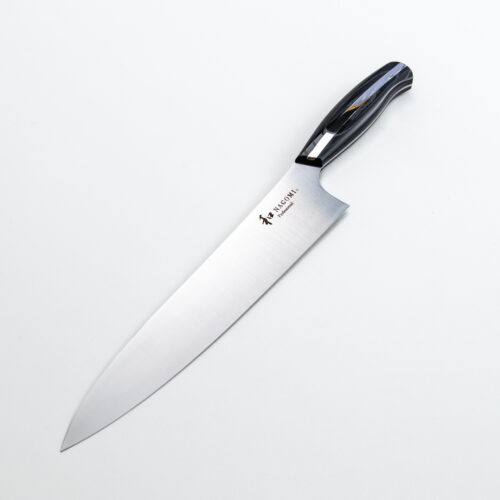
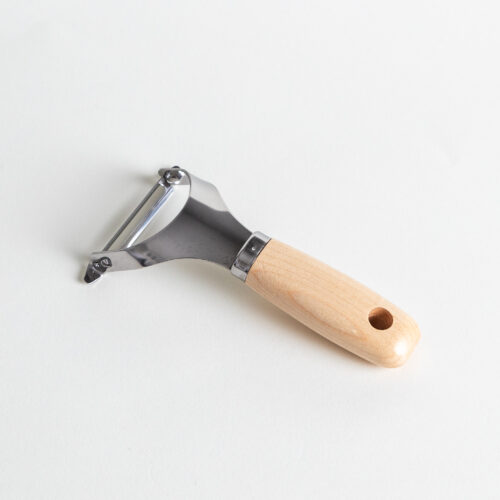
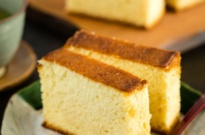
Hey Nami,
What are some recomended egg substitutions for this recipe because there is currently an egg shortage here in Australia due to a bird flu outbreak
Hello, njosey. We’re sorry to hear about the egg shortage in Australia.
Eggs are a key element in this cake, and substitutes might be difficult to acquire. We hope the situation improves shortly.
Can we still see the original recipe anywhere? I really liked it was simple and went down very well I’m my household
Hi, Erica! Thank you for trying Nami’s recipe!
The recipe’s ingredients and methods are the same. The only thing Nami introduced was the Awakiri steps. Mizuame is optional.
We hope this helped!